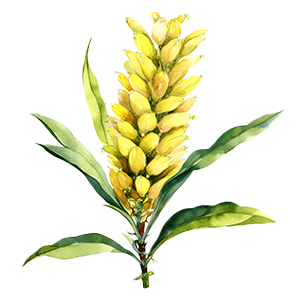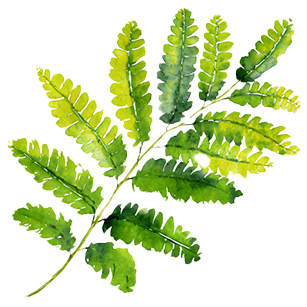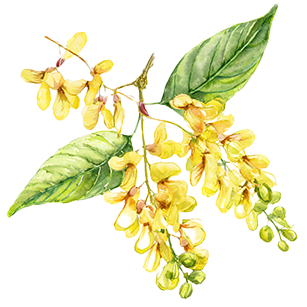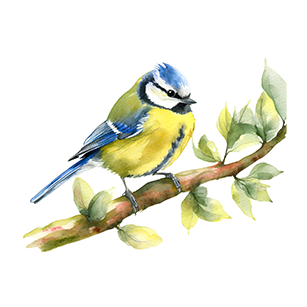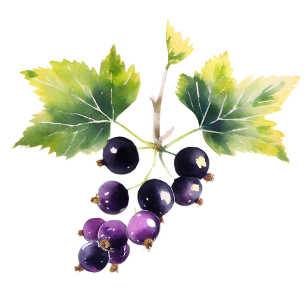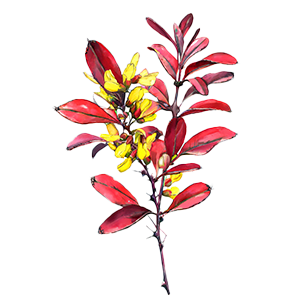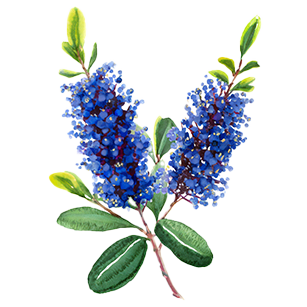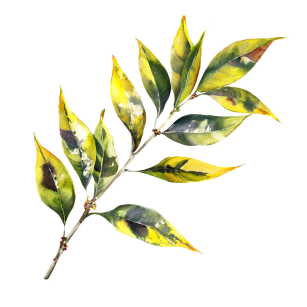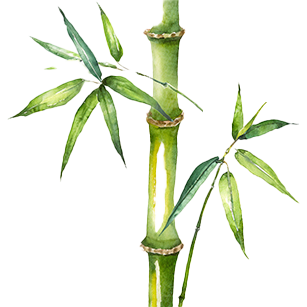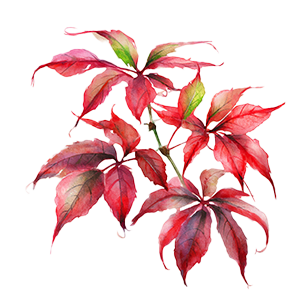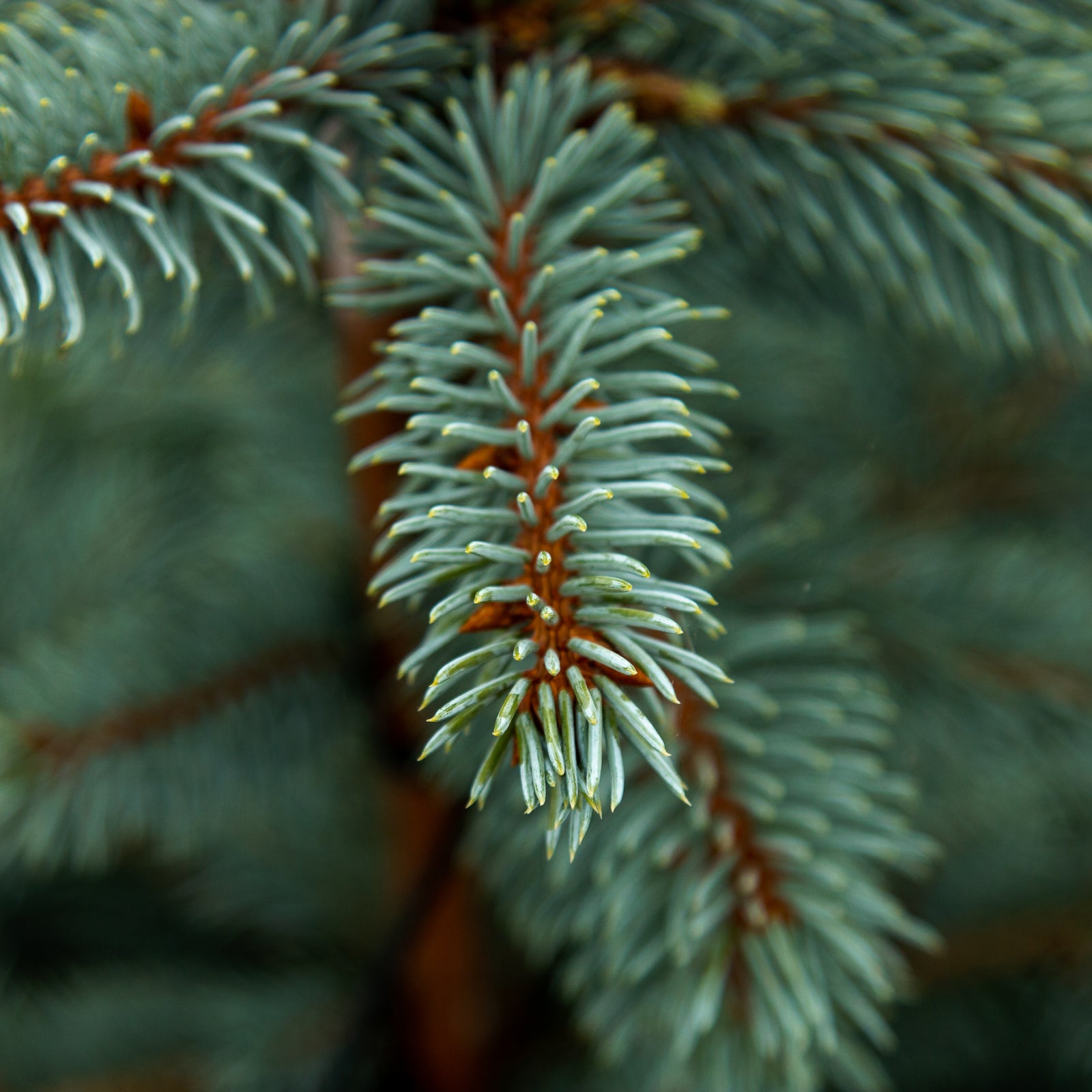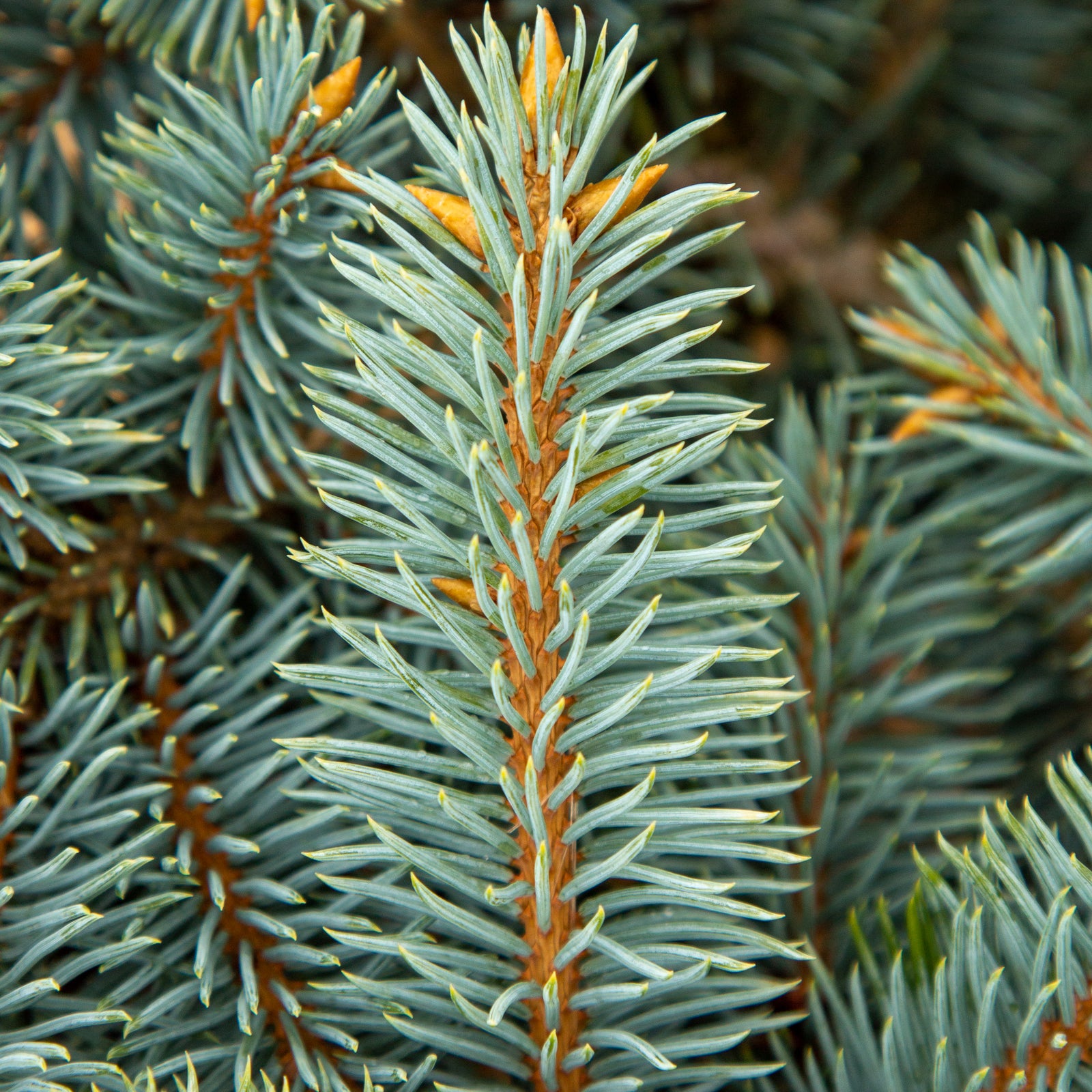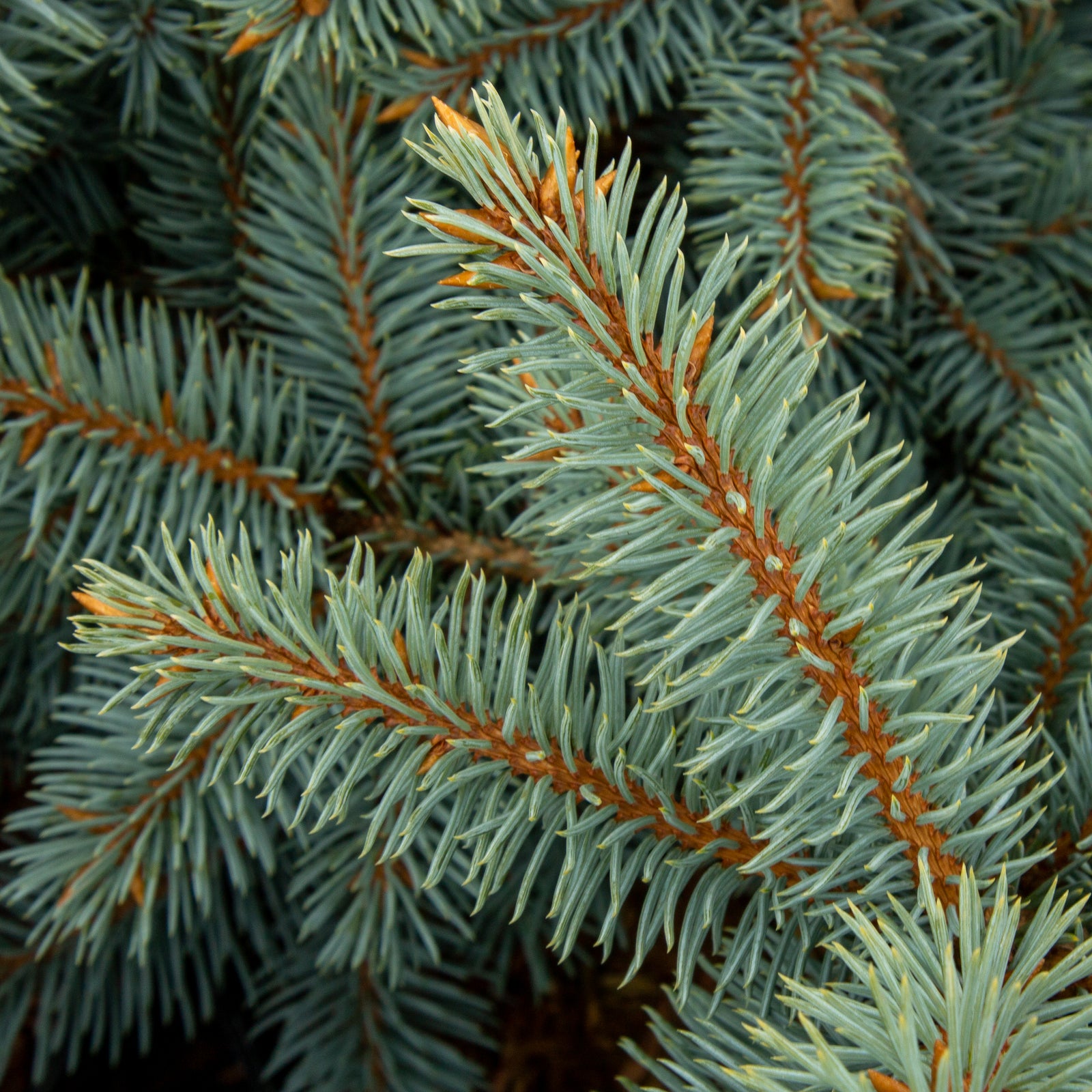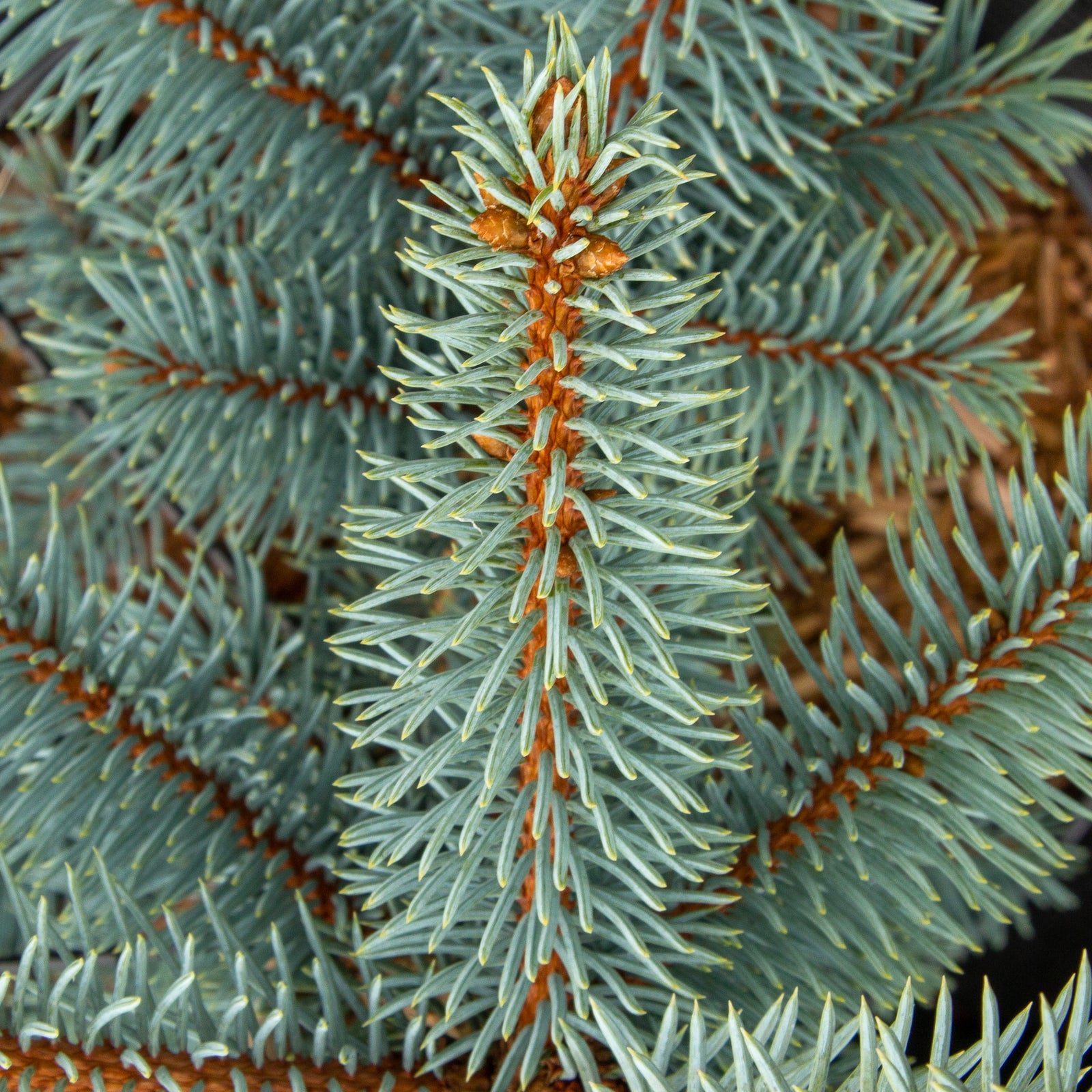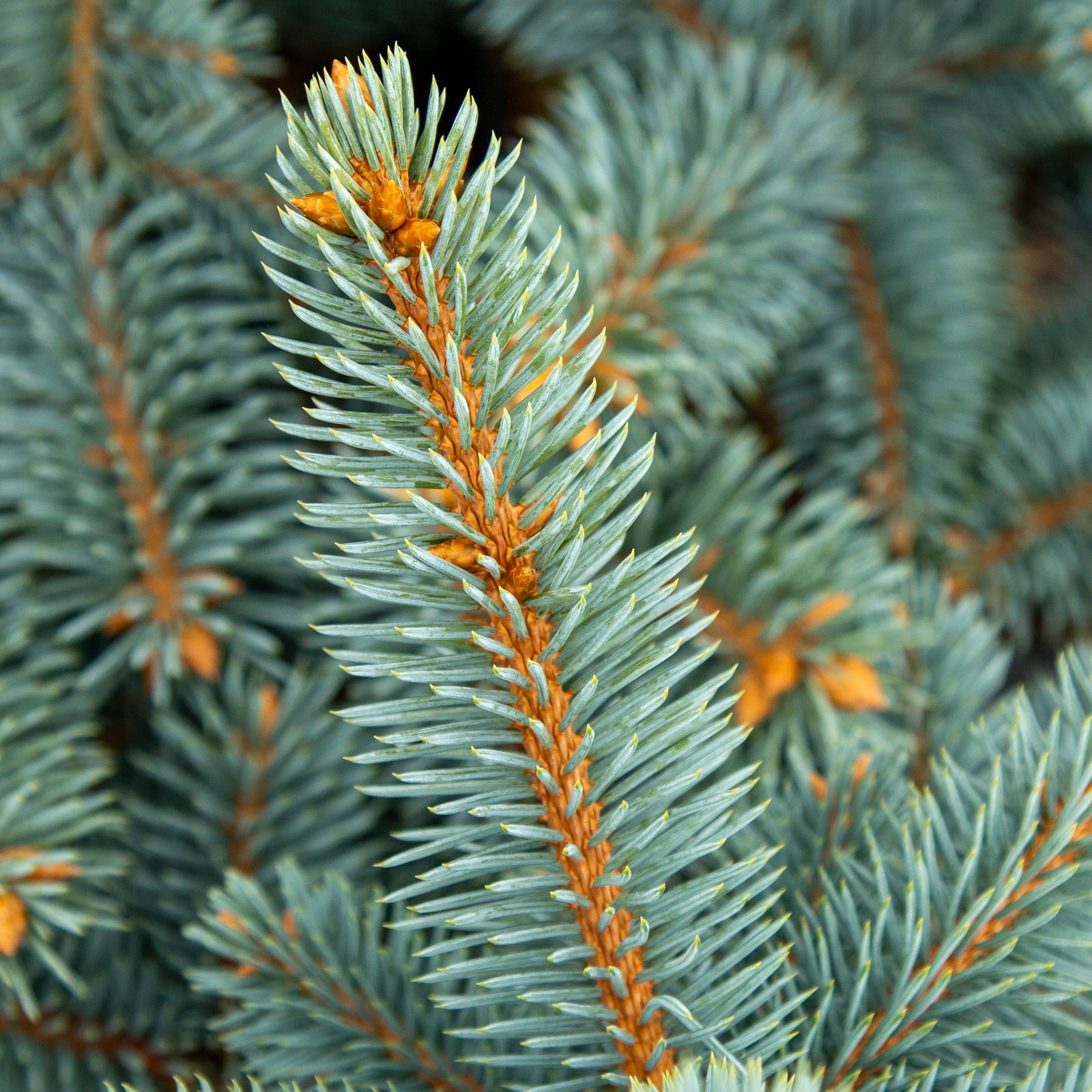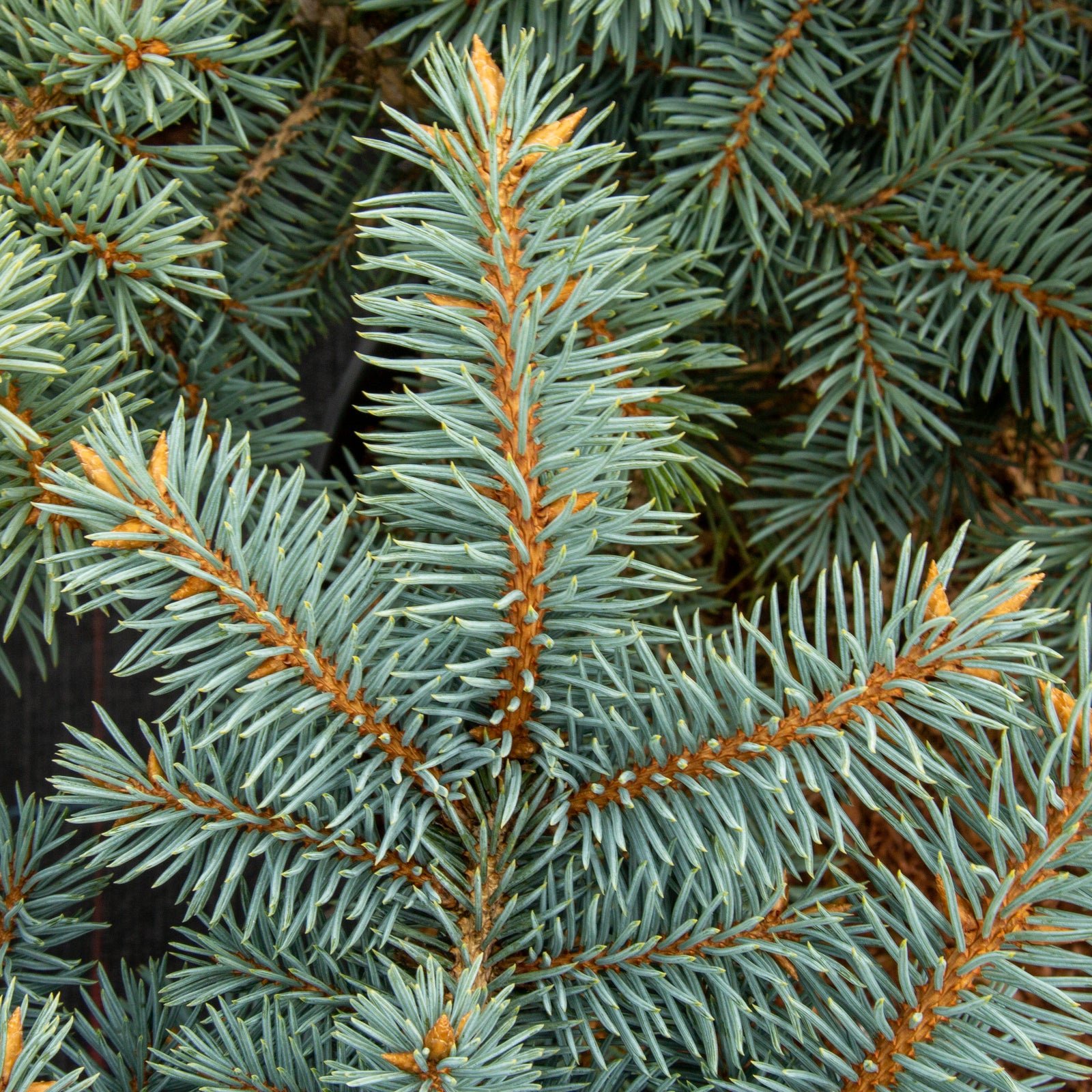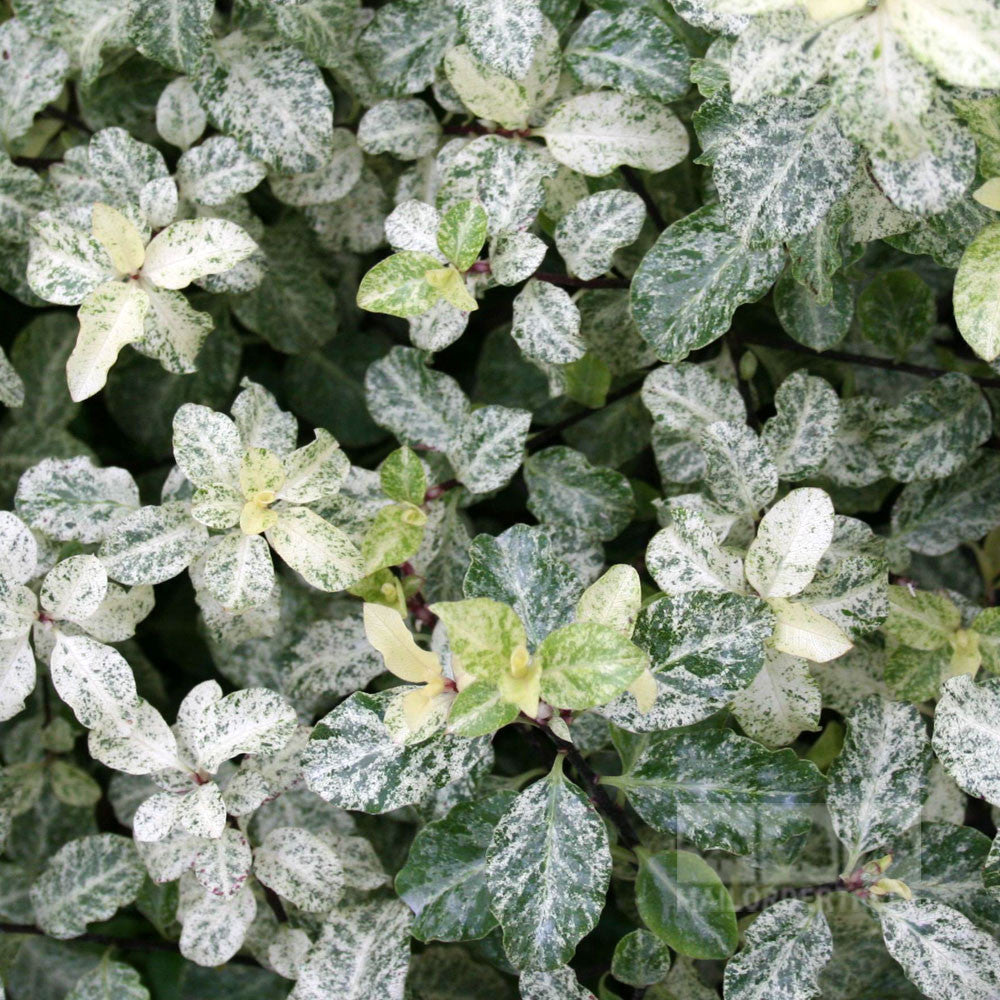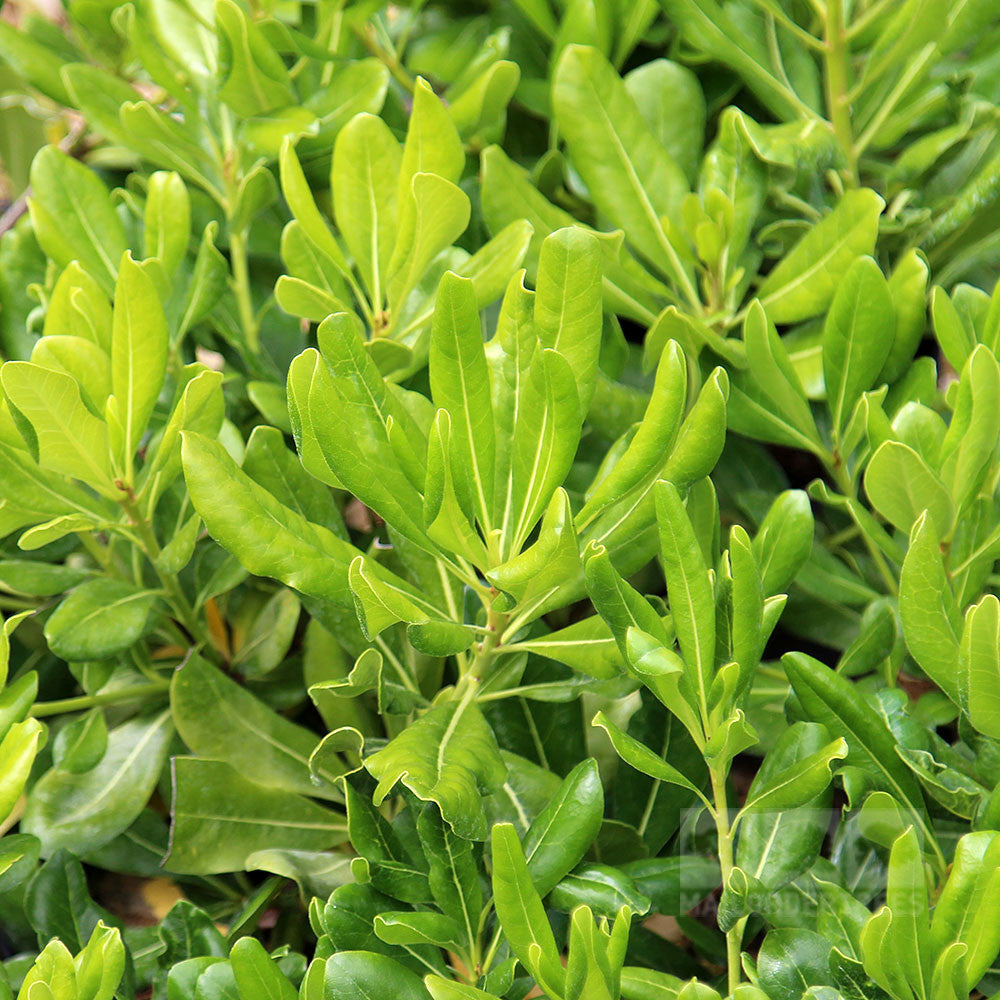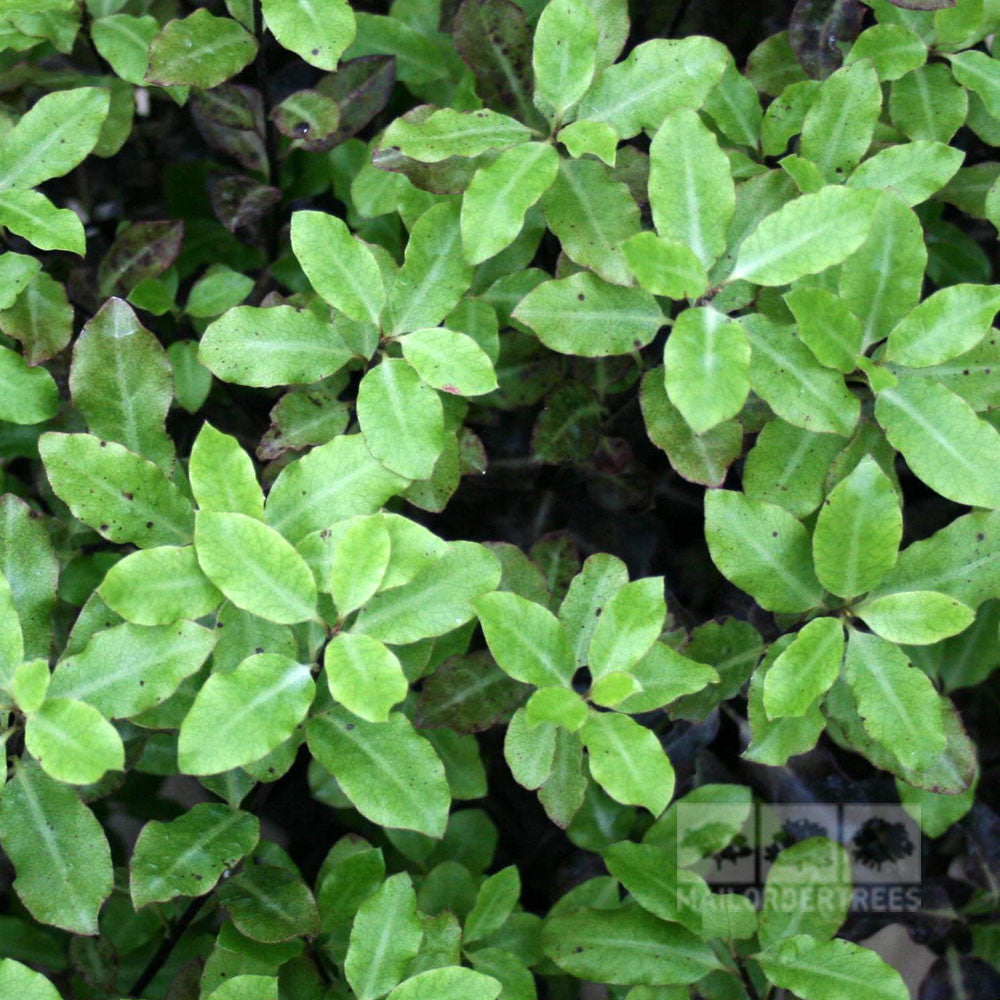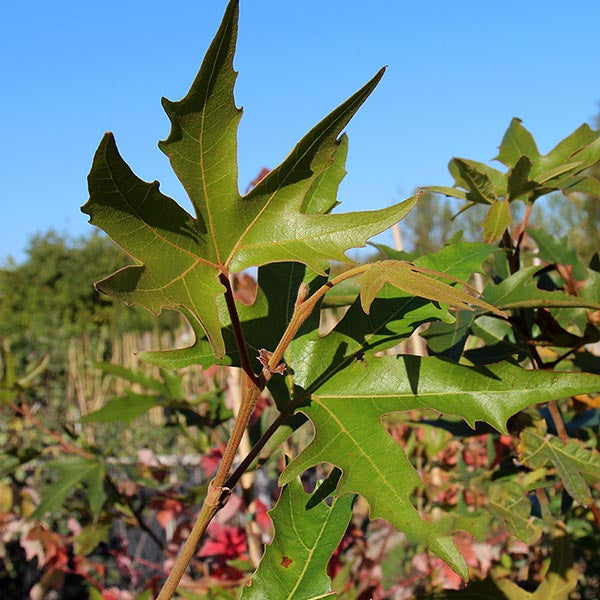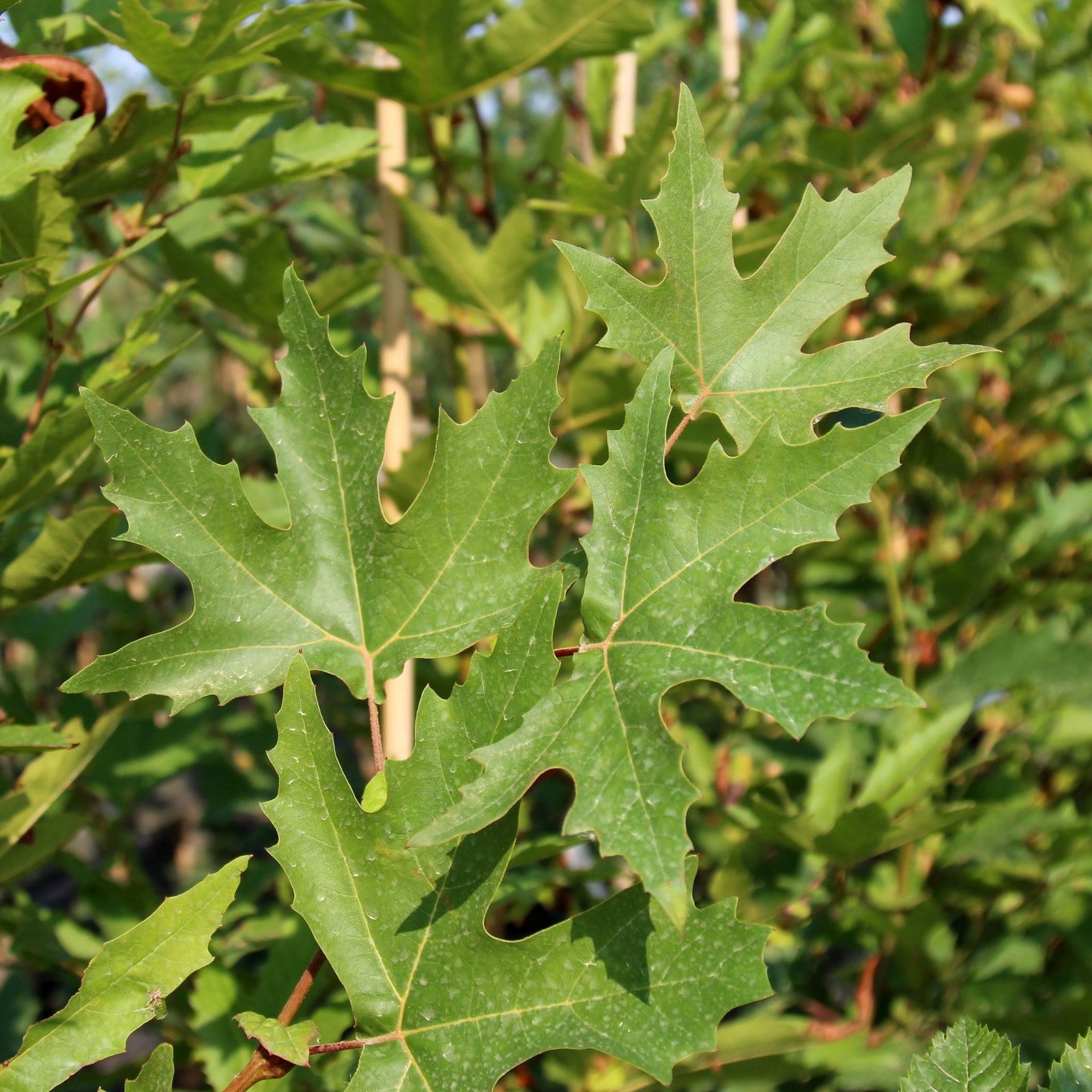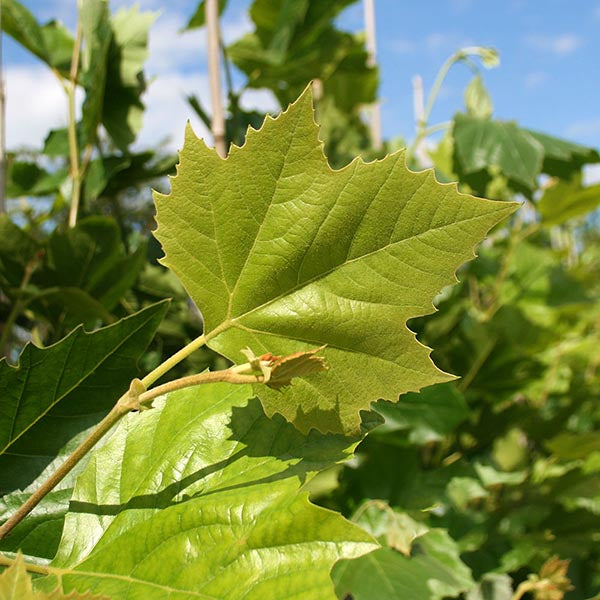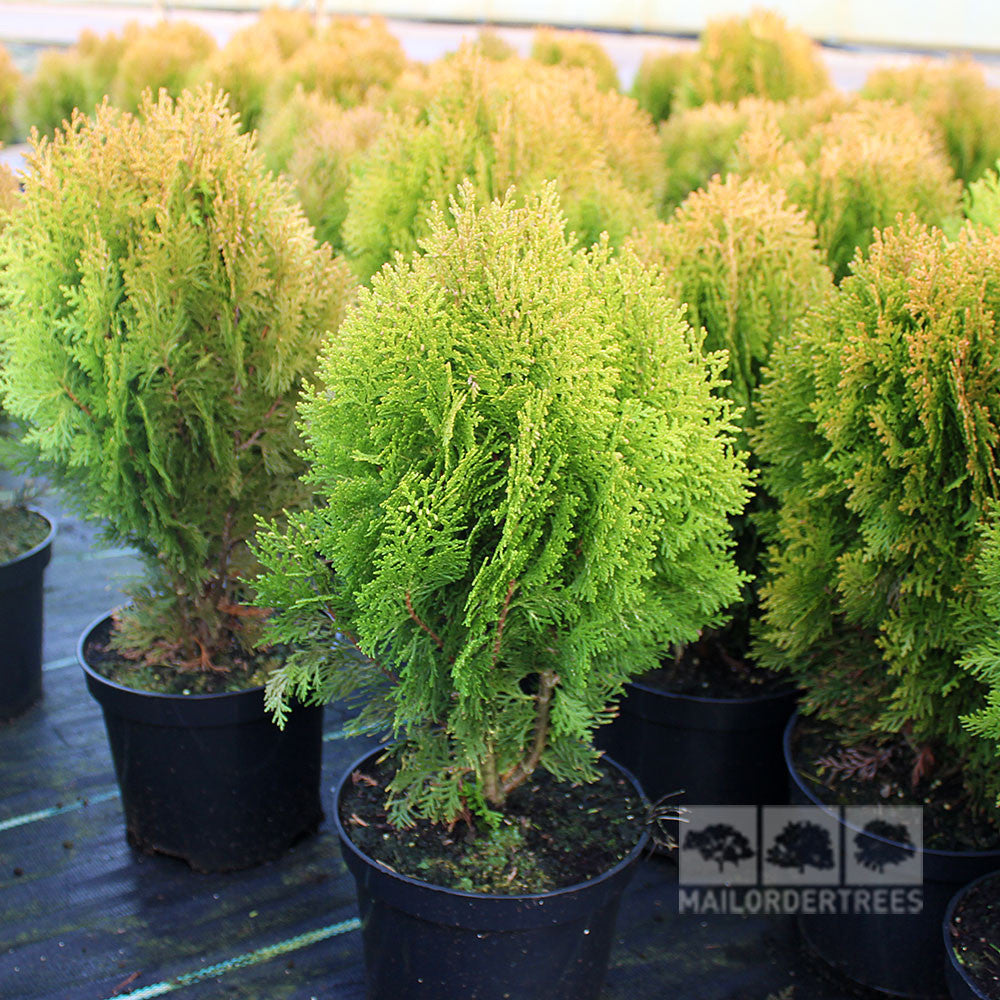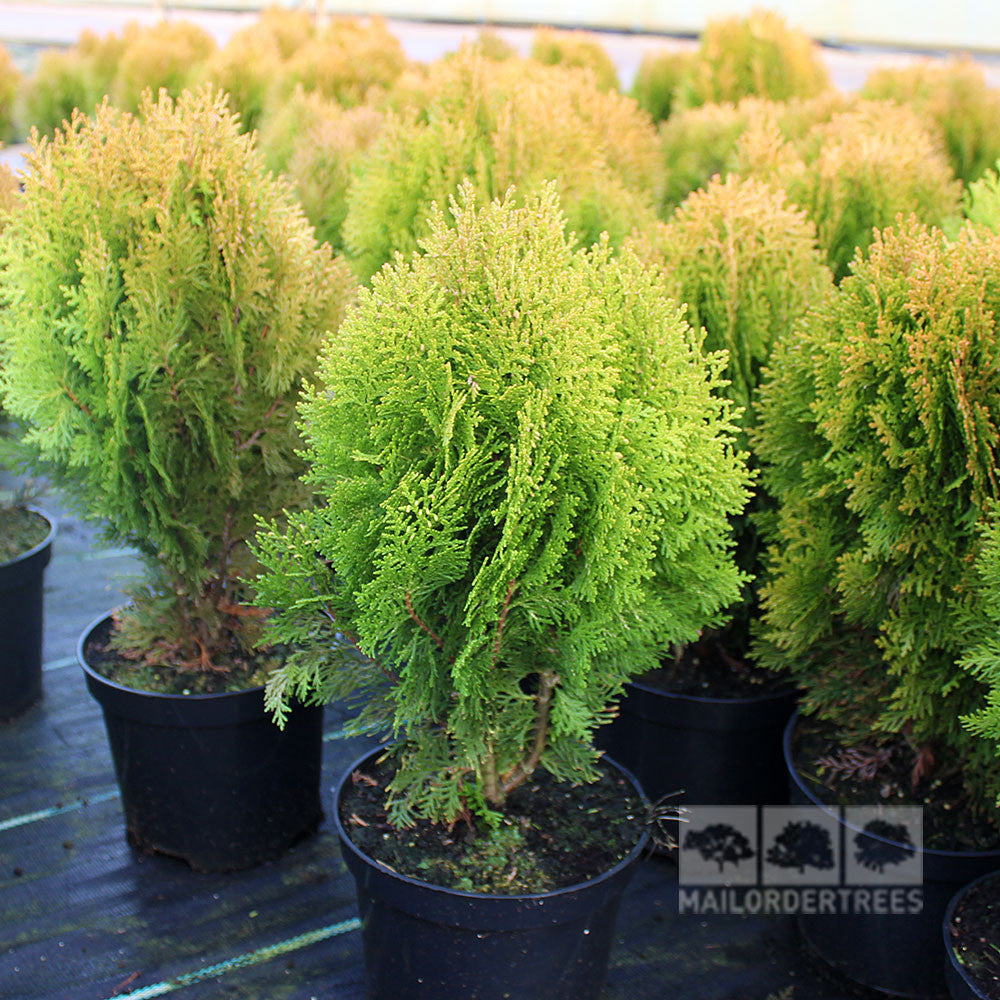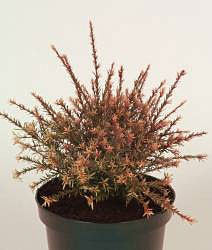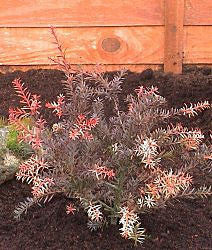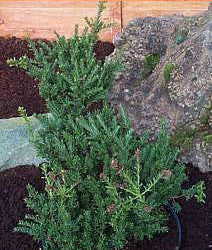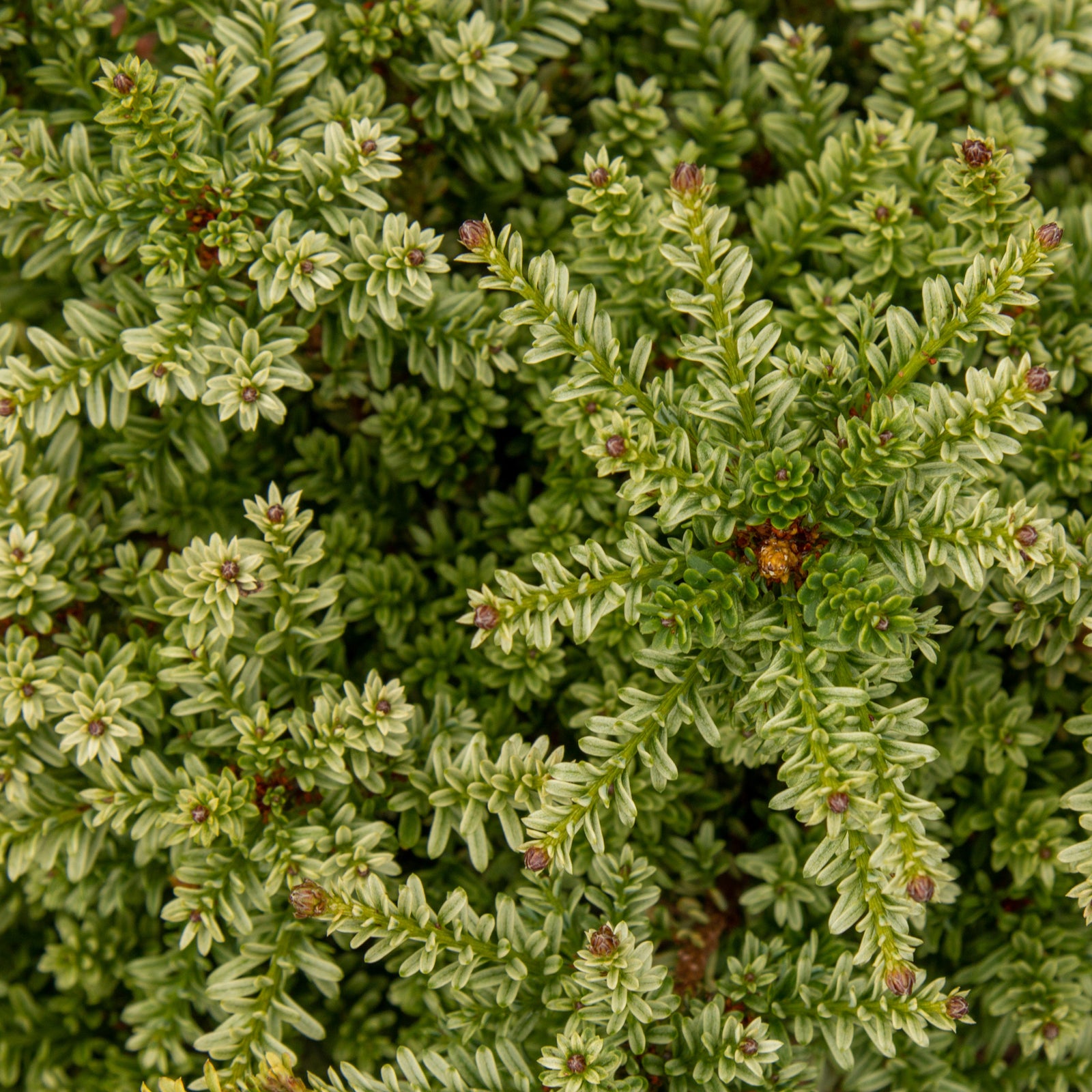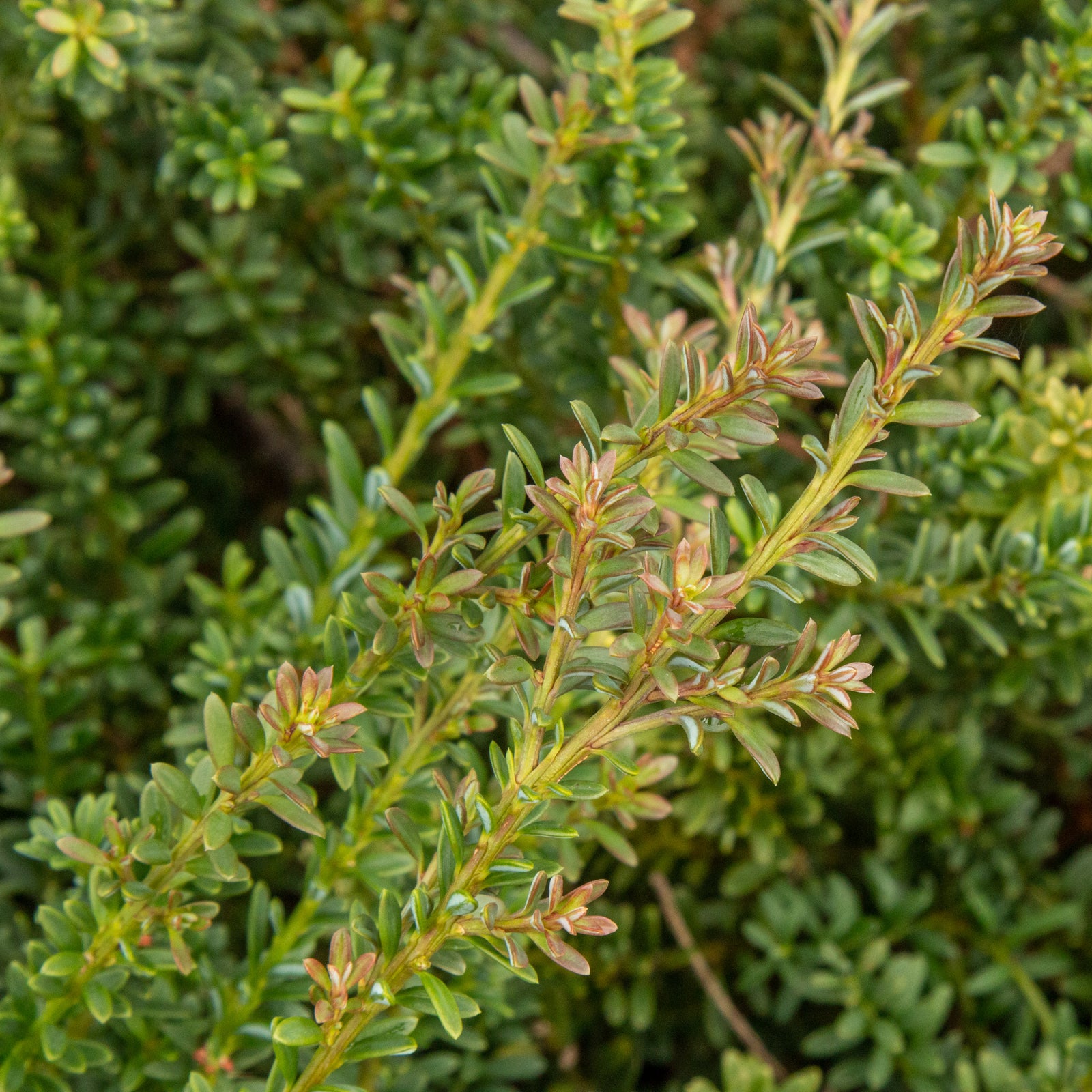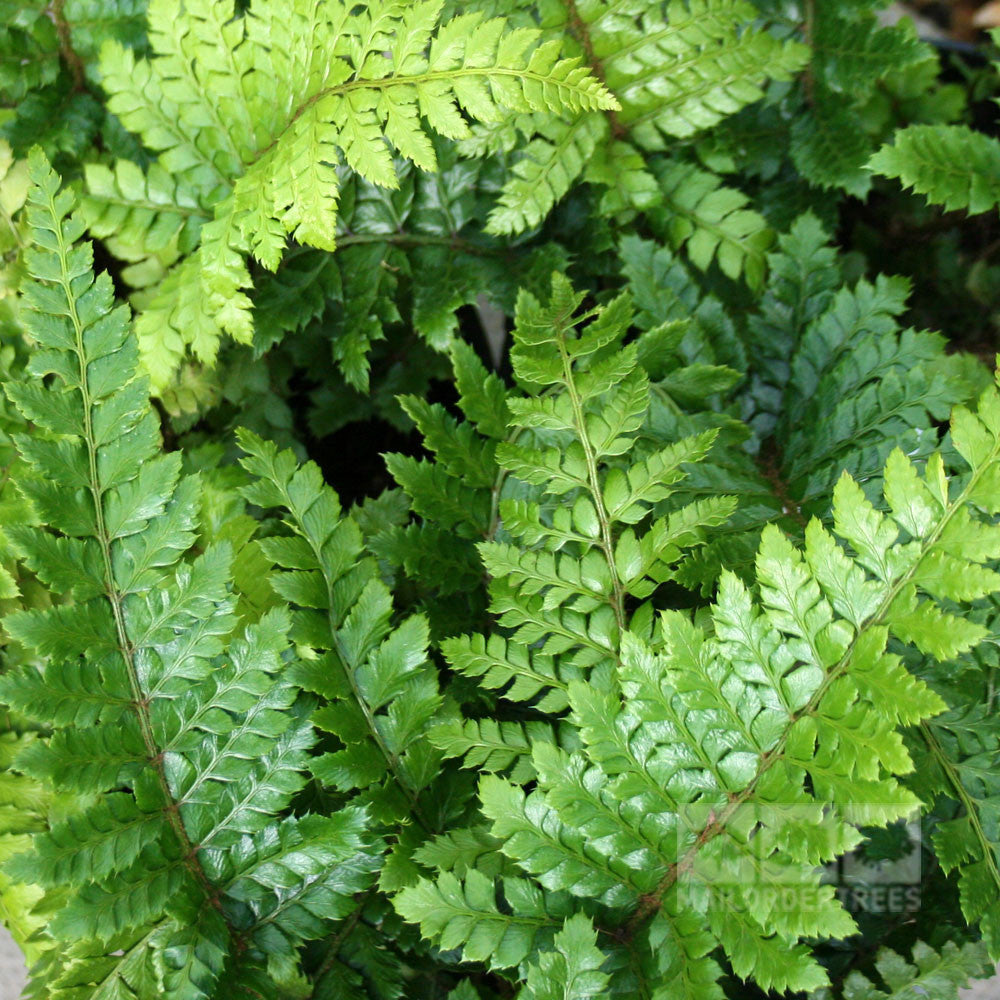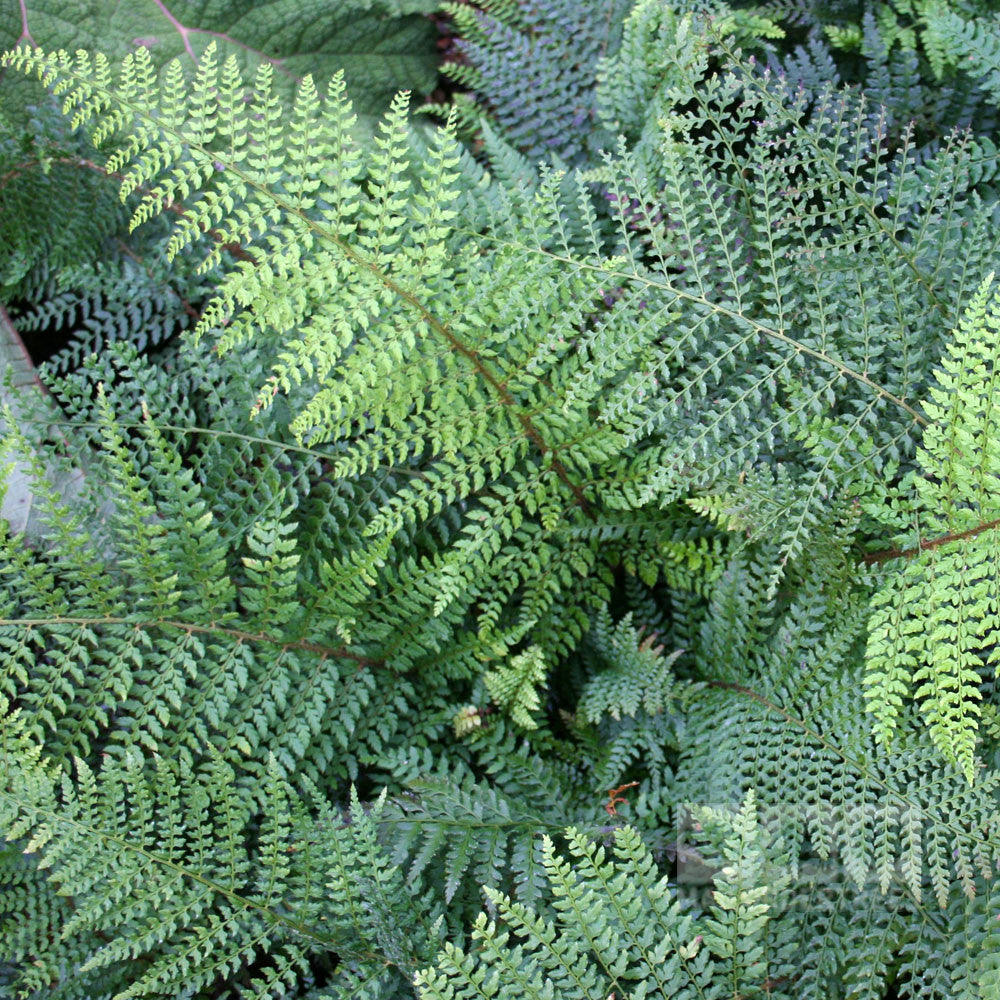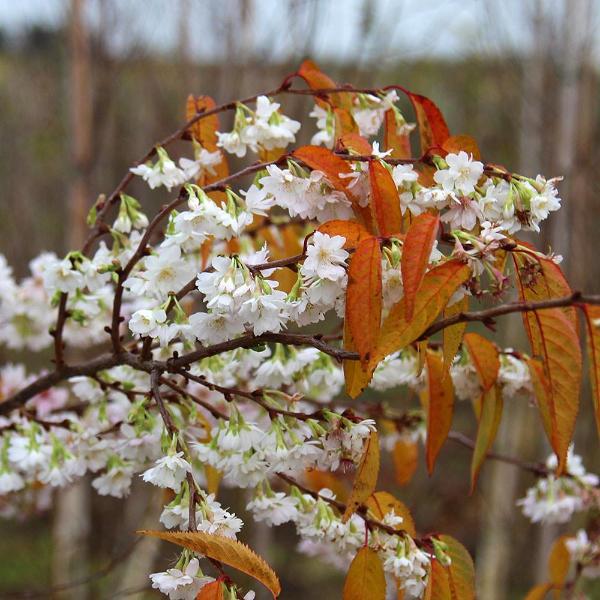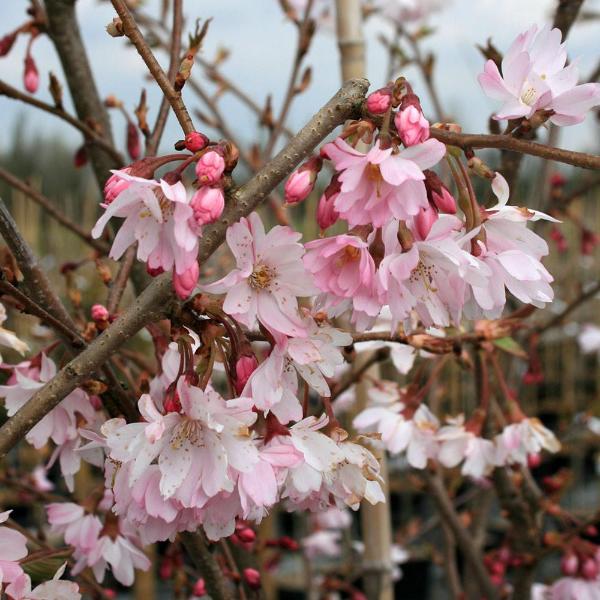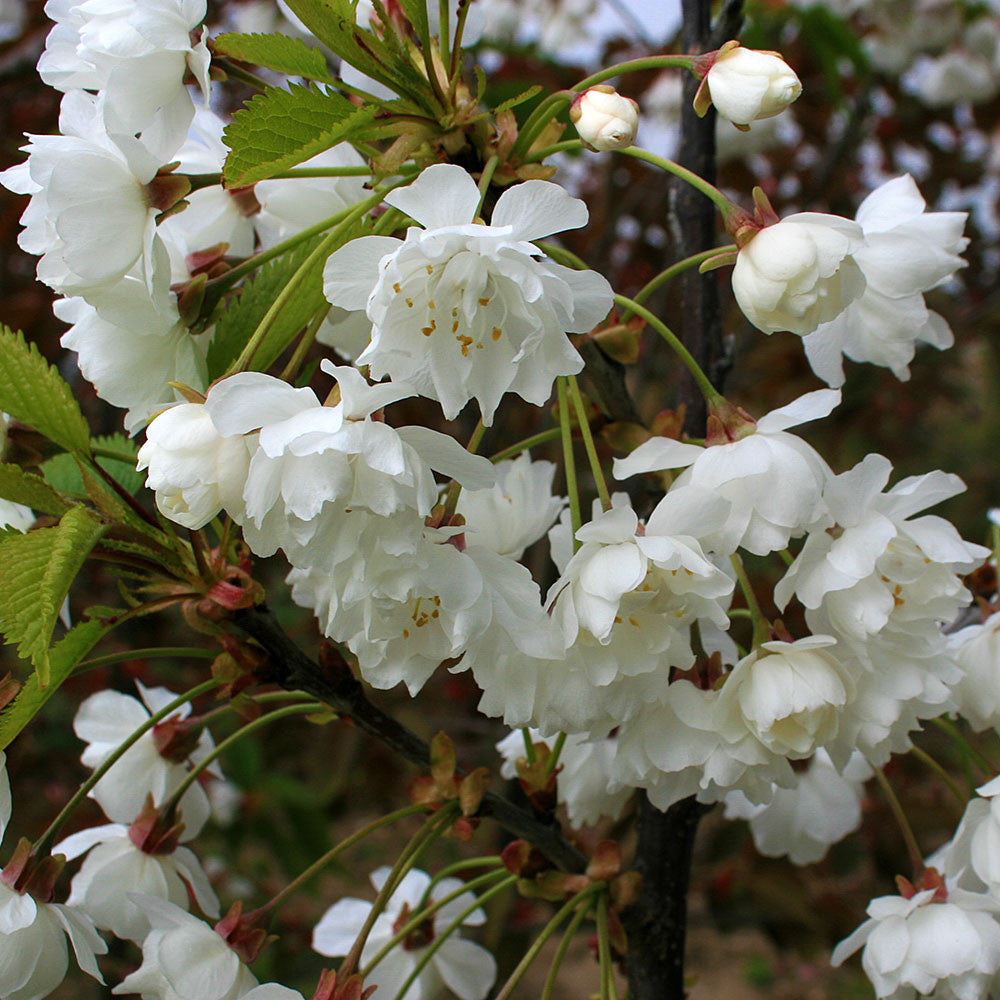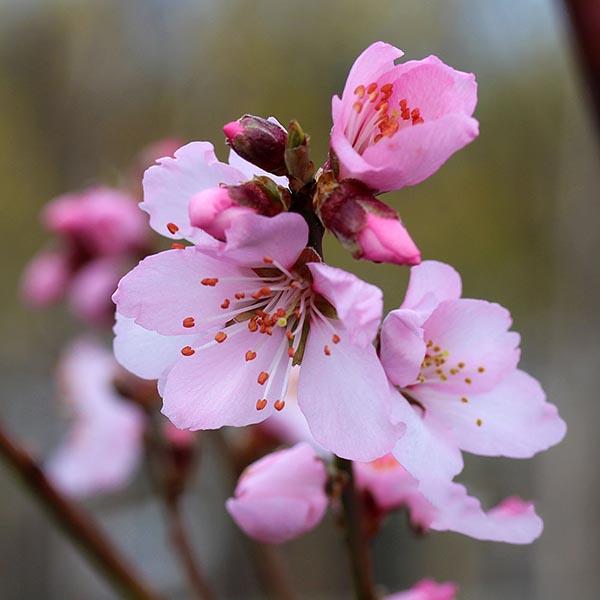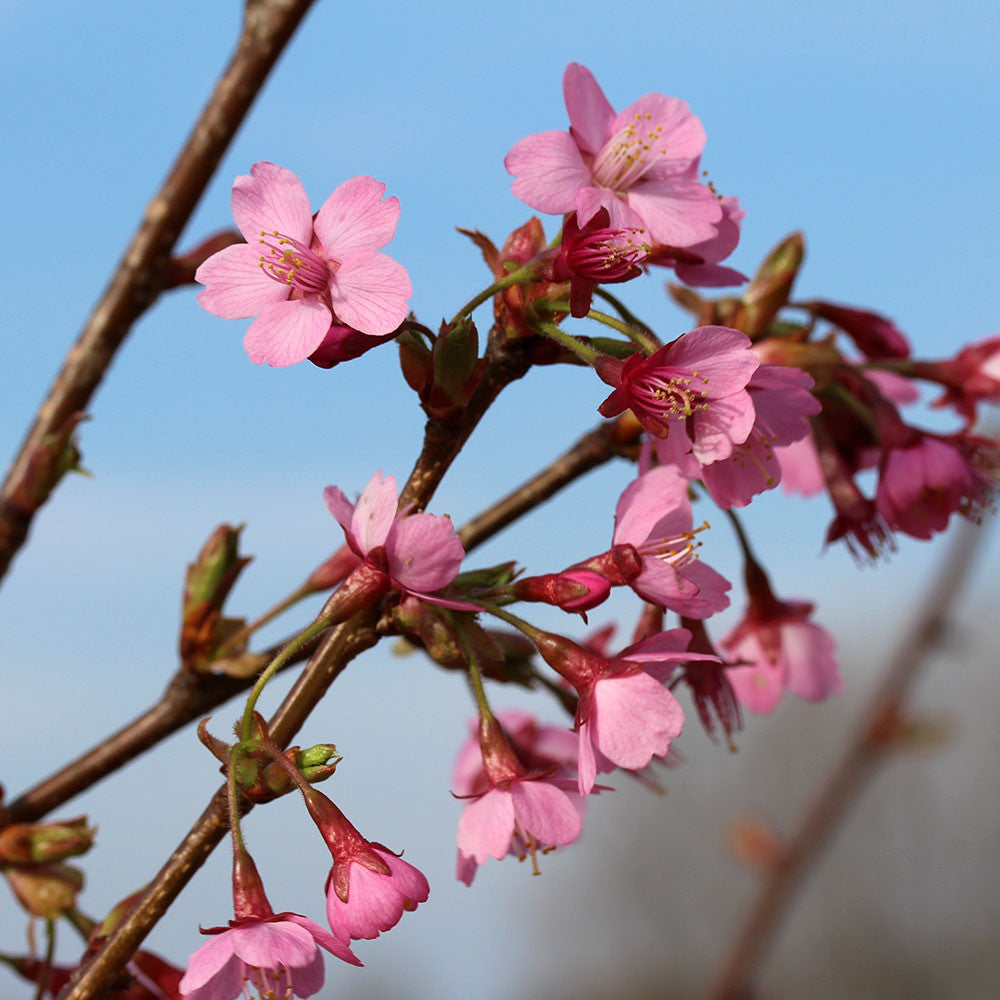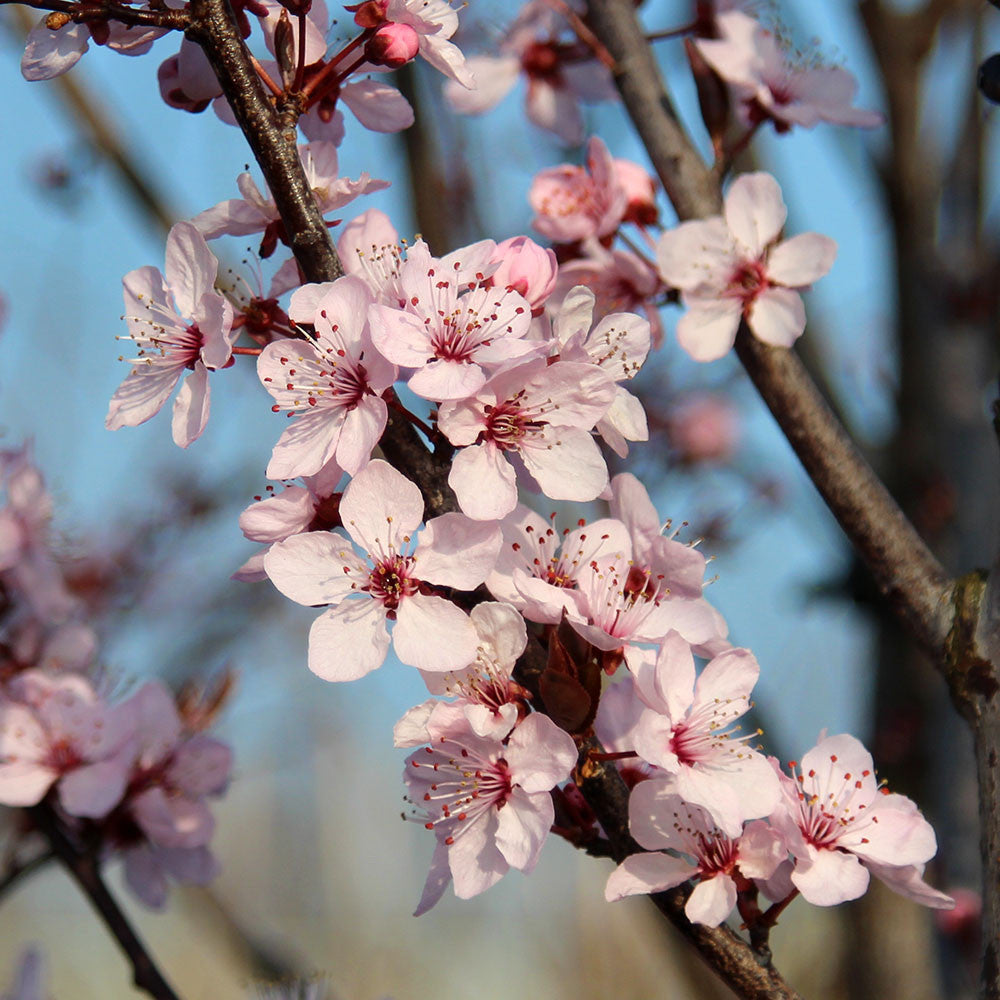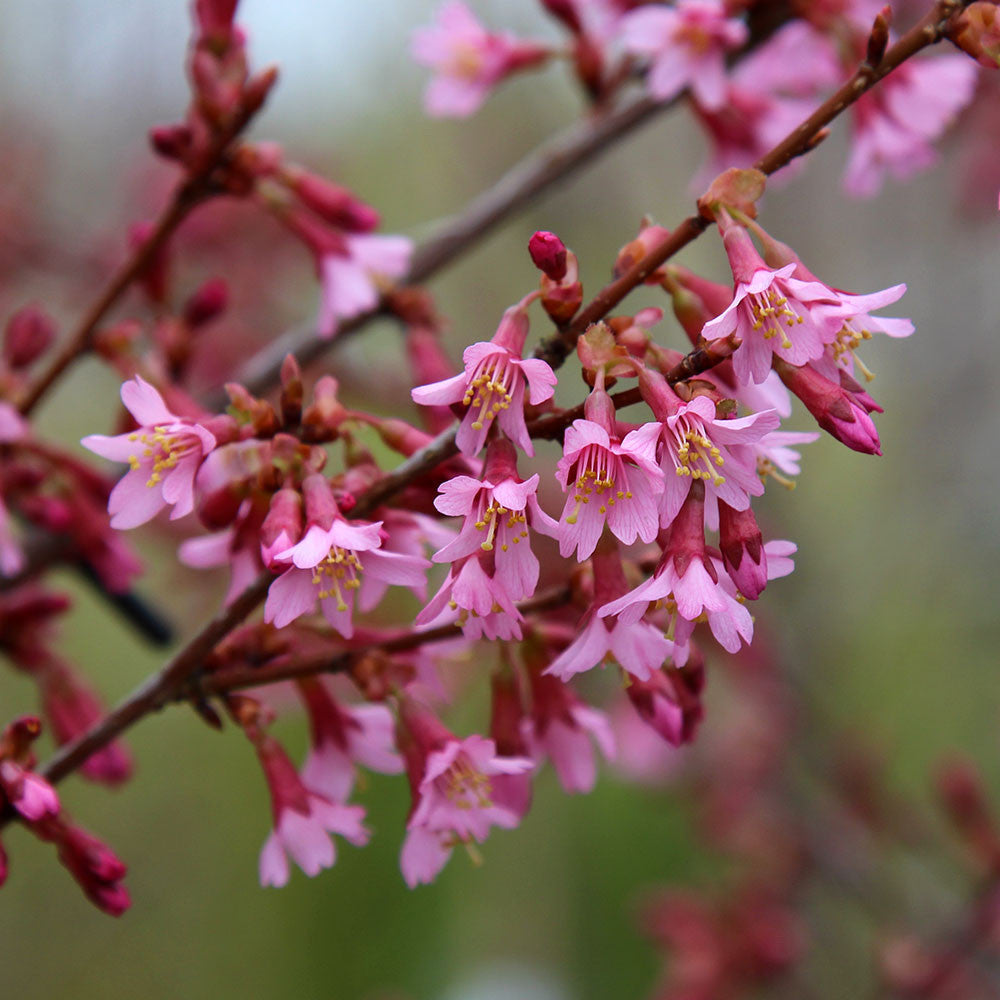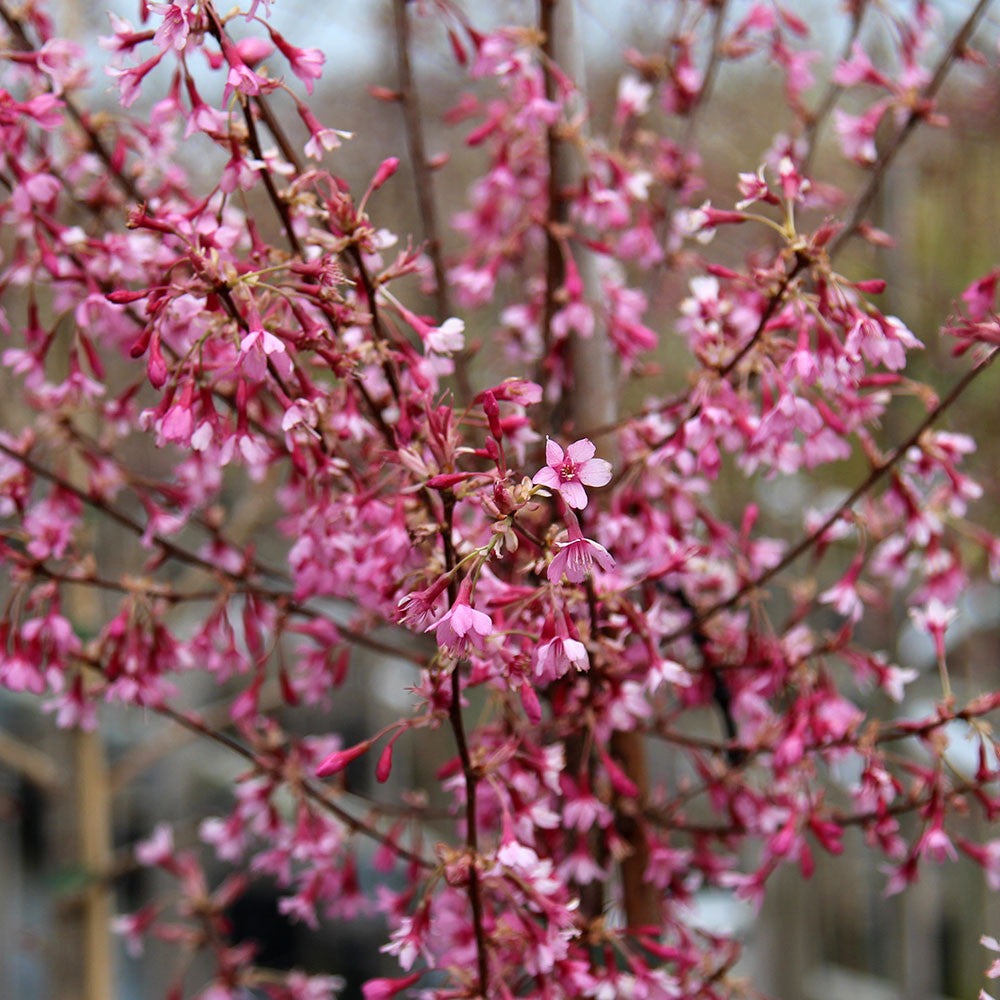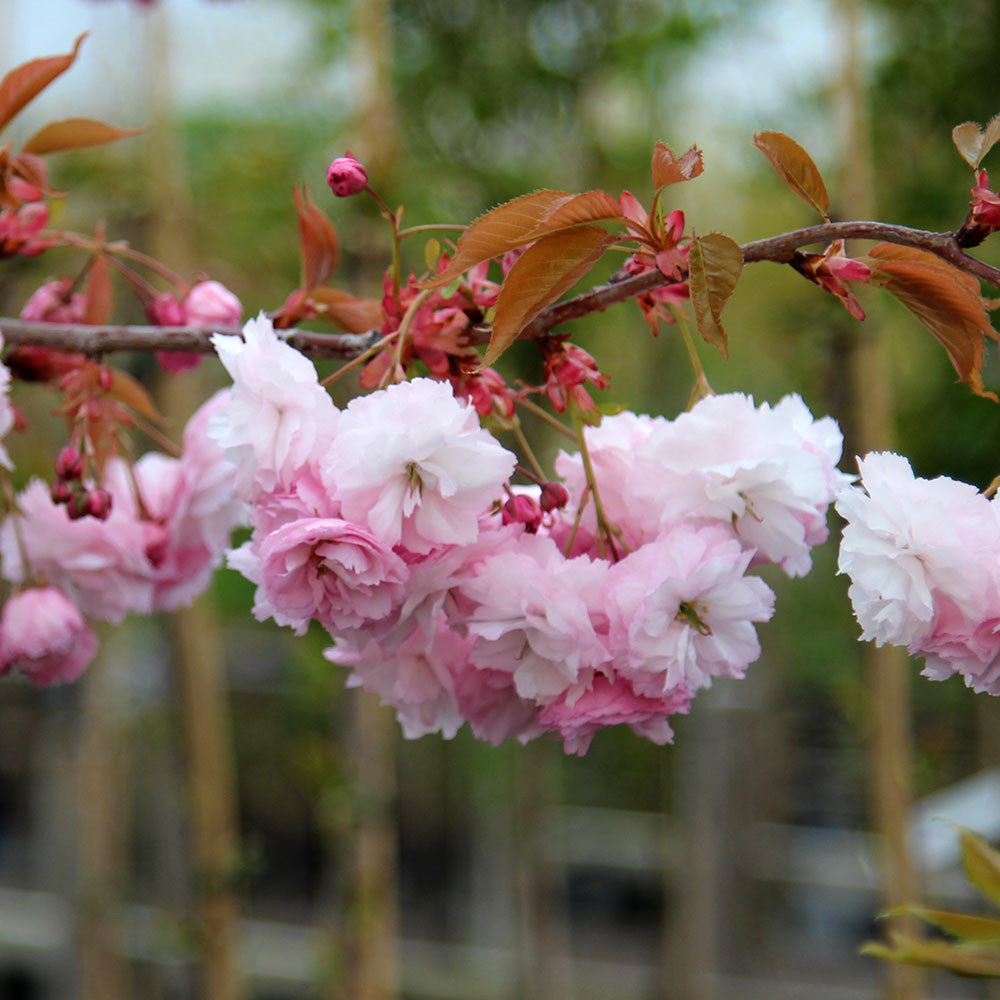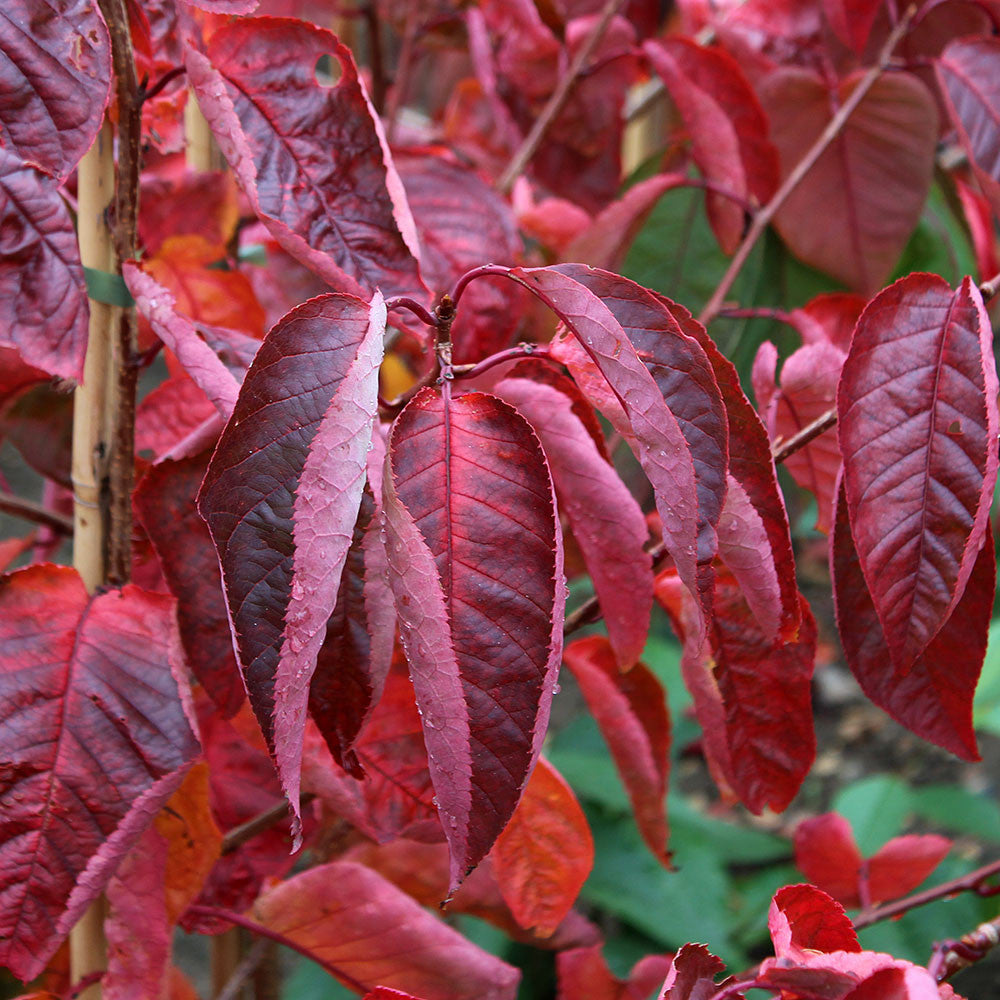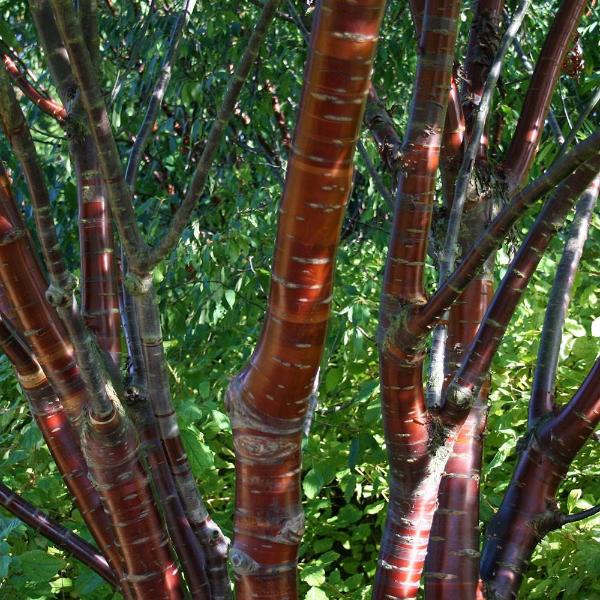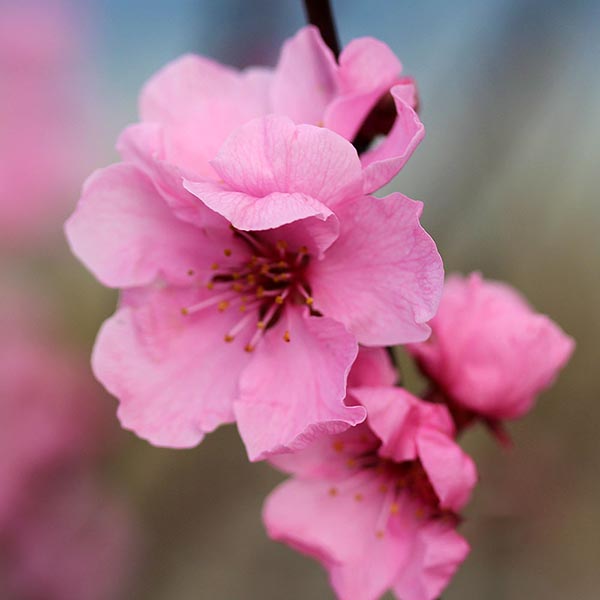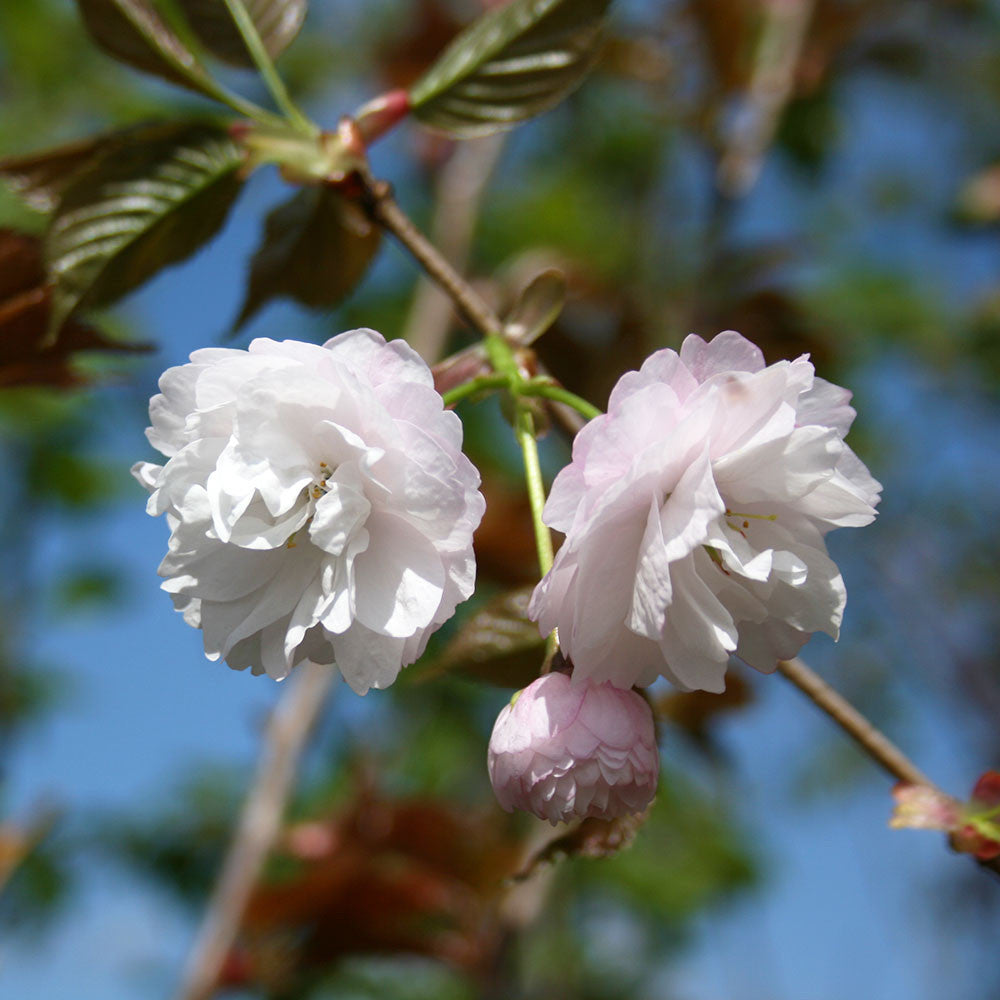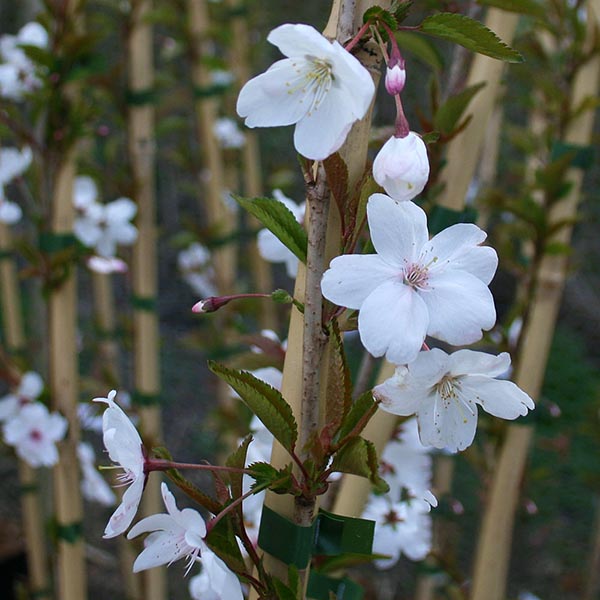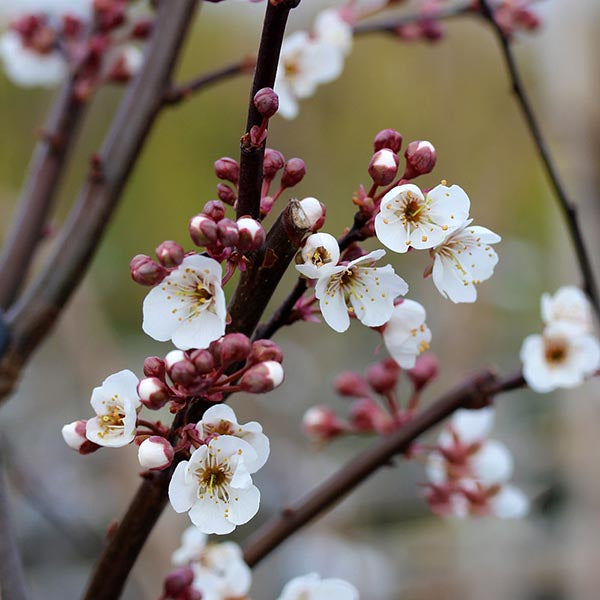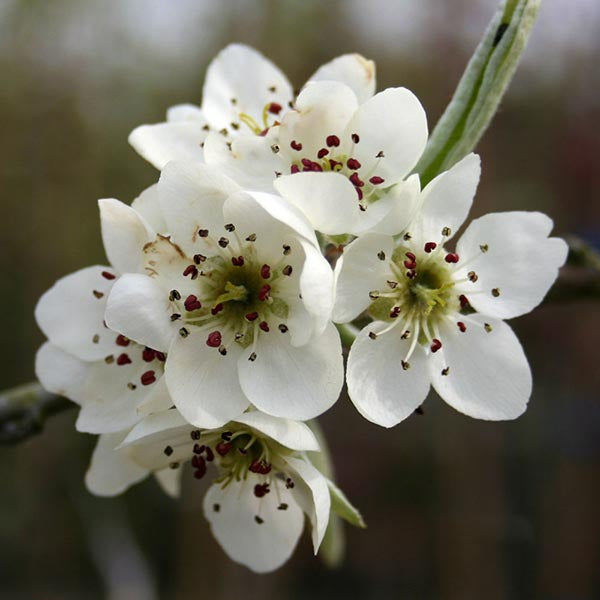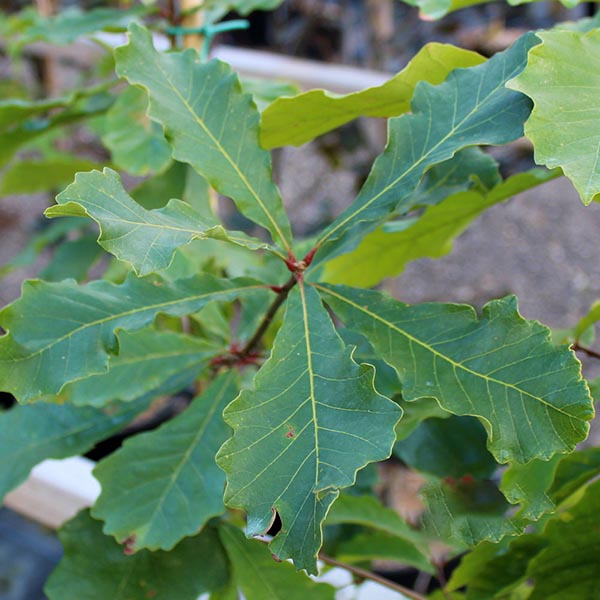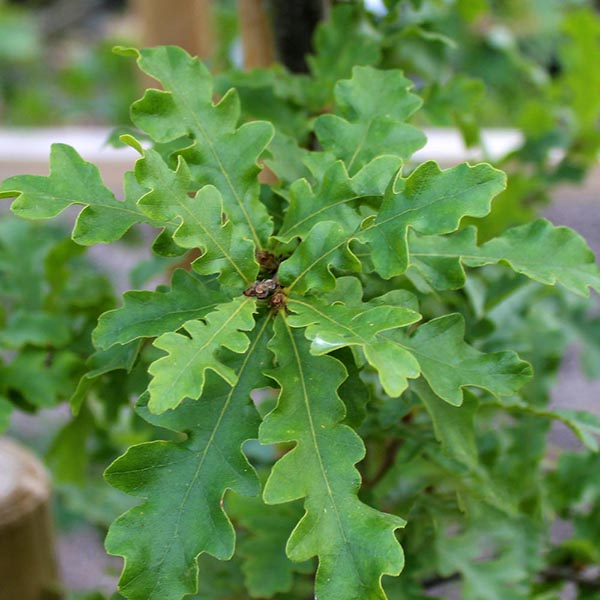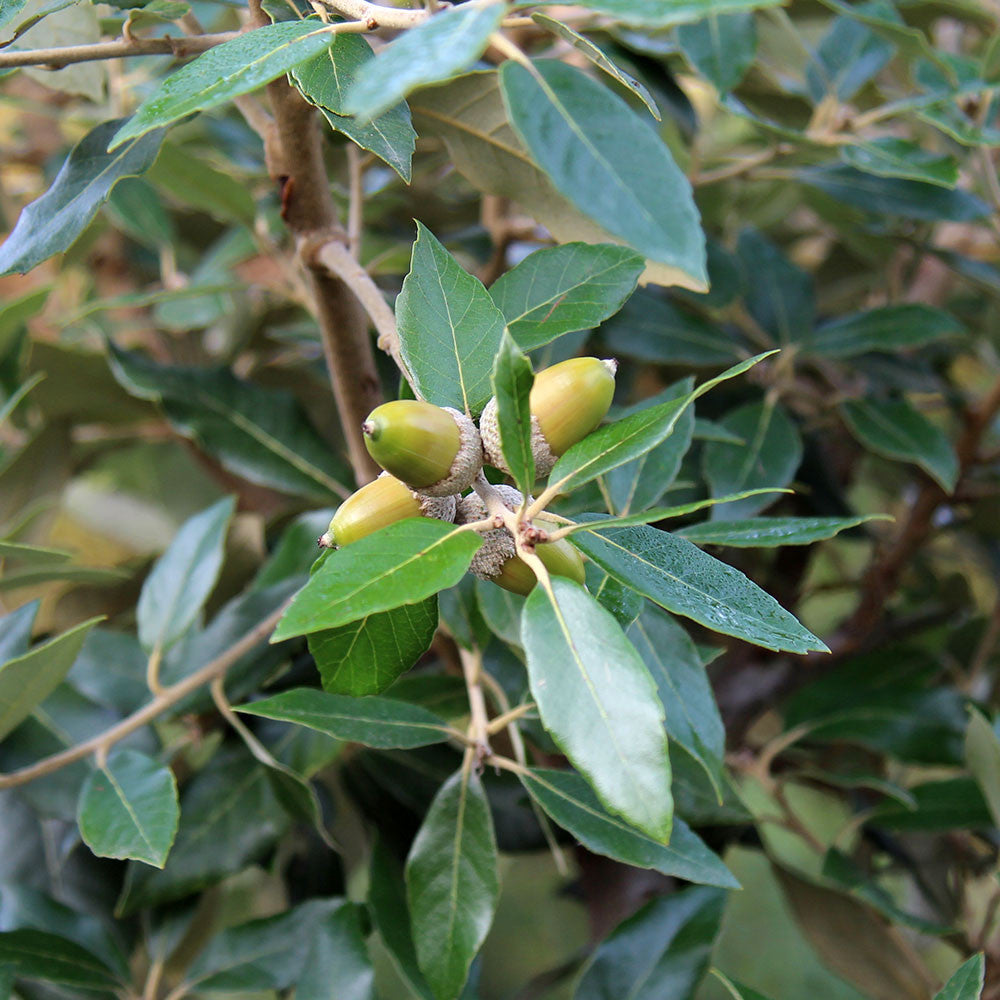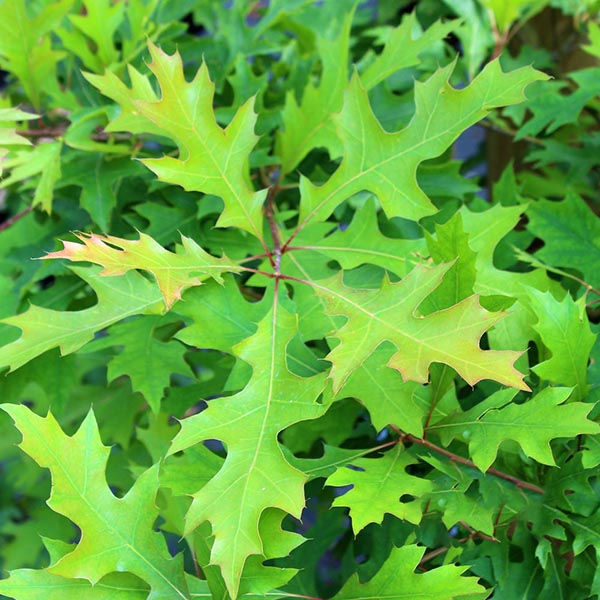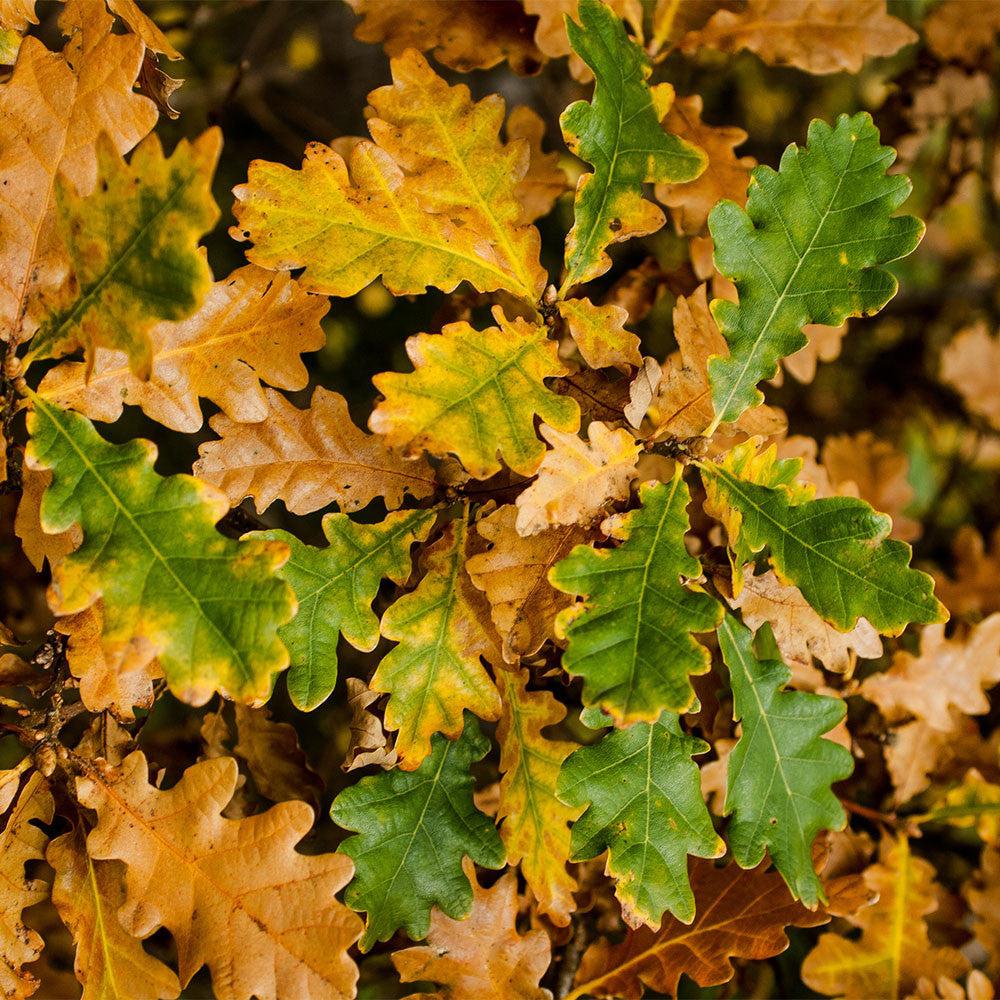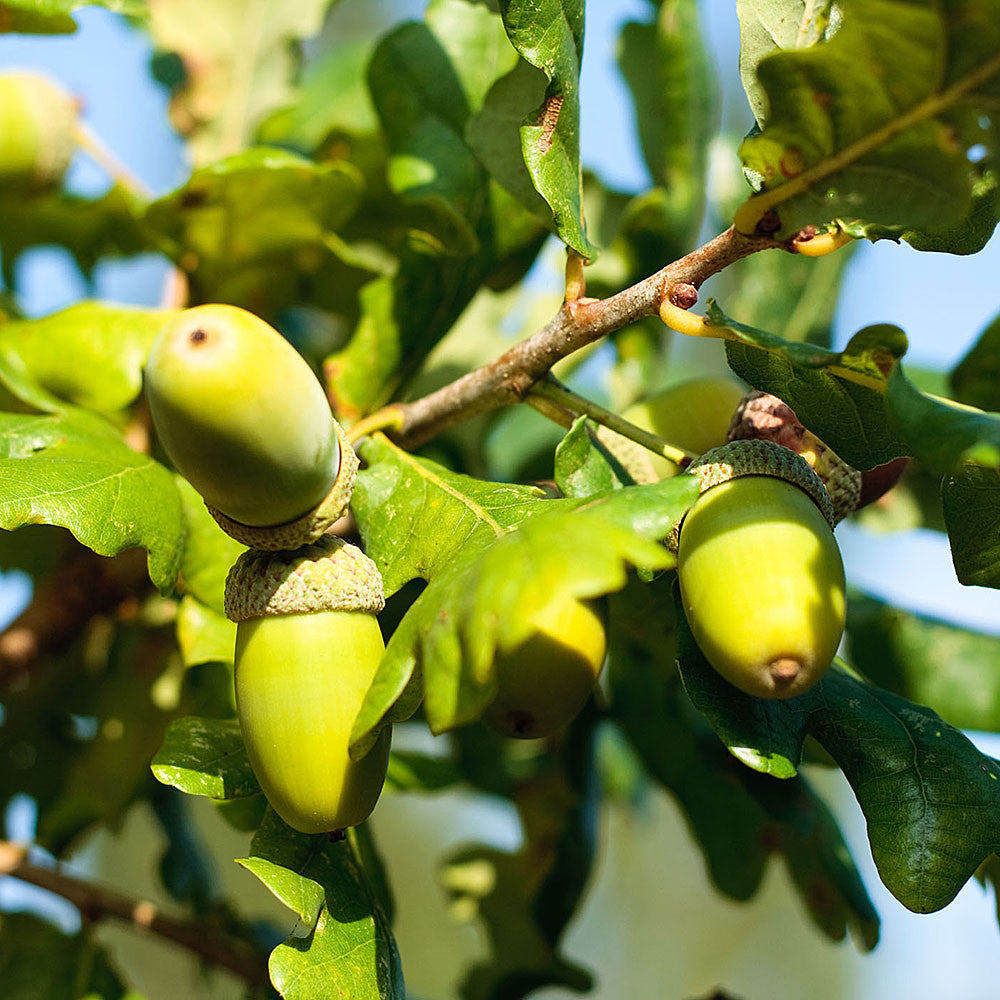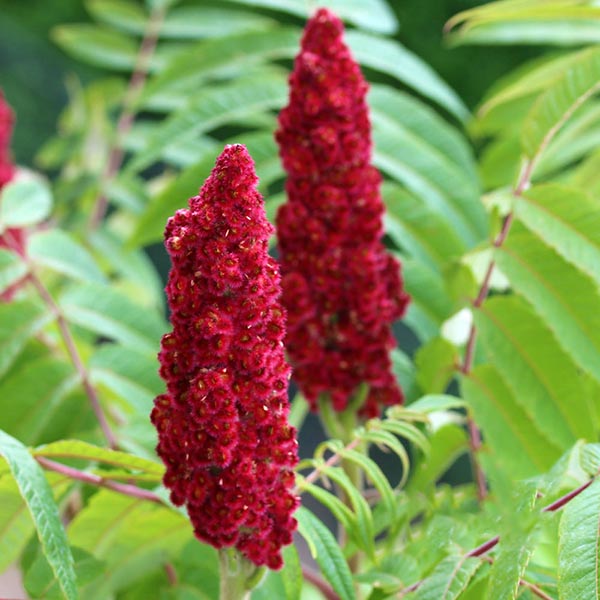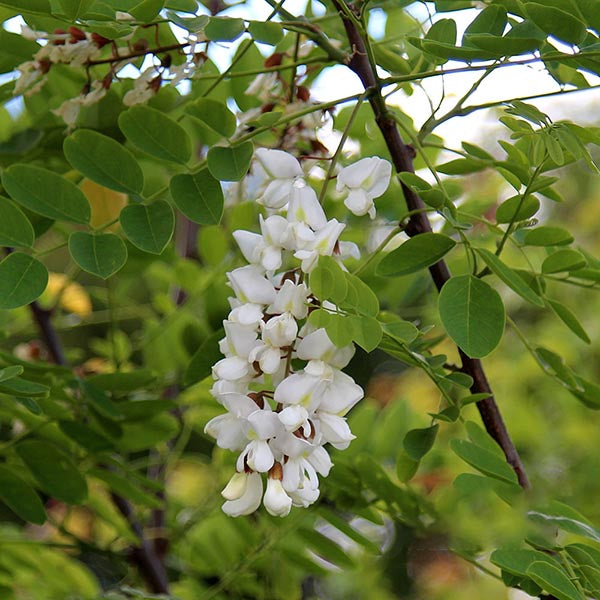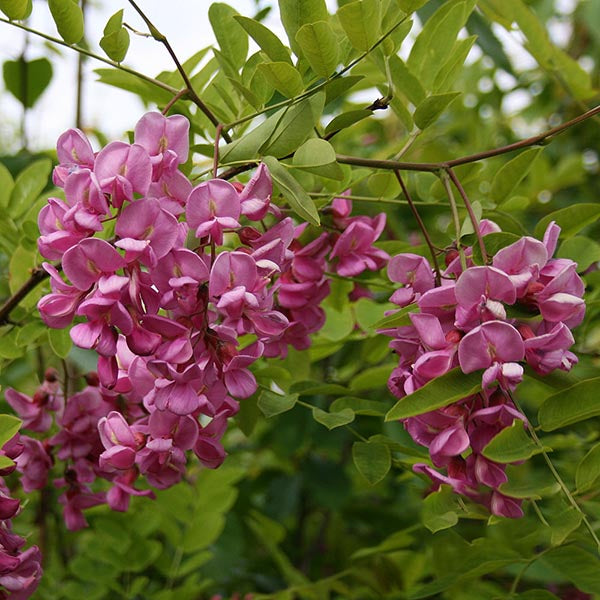Prunus Autumnalis Rosea
Autumn Cherry Tree
Prunus 'Autumnalis Rosea' is a small deciduous tree that features pale-pink, semi-double flowers that appear in autumn and last over winter. This ornamental specimen also boasts ovate, dark-green leaves and glossy fruits in spring.
This tree is a true delight and is worthy of planting in any garden: a tree that gives you year-round interest and that remains relatively small, making is perfect for a range of gardens.
Each autumn, usually in November, a profusion of bell-shaped, pink, semi-double flowers appear all over the tree. The pale pink flowers open from dark pink buds and they add a real burst of colour as the dark nights draw in. From November to March, the blooms appear intermittently and they look stunning in a snow-covered garden. The flowers later become small and glossy fruits, which make a great natural bird feeder, but the fruits are soon overshadowed by the spring foliage.
The leaves, which are ovate in shape and dark-green in colour, cover the spreading branches and make a great foil for lighter-leaved varieties. One of our favourite trees for planting alongside the ‘Autumnalis Rosea’ is the stunning Prunus Okame Harlequin, as the vivid pink flowers and variegated leaves of the Harlequin contrast beautifully with the strong green foliage of the ‘Autumnalis Rosea’.
Come autumn, just before the flowers appear, the leaves produce a final show of colour: they turn to shades of rich red, orange and yellow before falling. Plant this tree in a sunny position for it to fully thrive: it makes a great lawn specimen for smaller gardens that need an injection of winter colour.
Common Name: Autumn Cherry TreeLatin Name: Prunus x subhirtella 'Autumnalis Rosea'Soil: Tolerates most soil typesPosition: Full sunFlowering period/colour: From late autumn, through winter until spring /Bell-shaped, semi-double pale pink flowers.Hardiness: Fully hardyHeight/spread in 20 years: 4m x 4mSpecial features: Flowers from late autumn, through winter until spring. (Deciduous)













